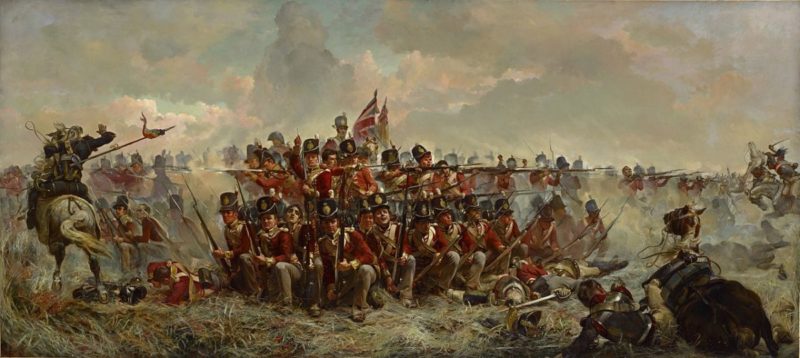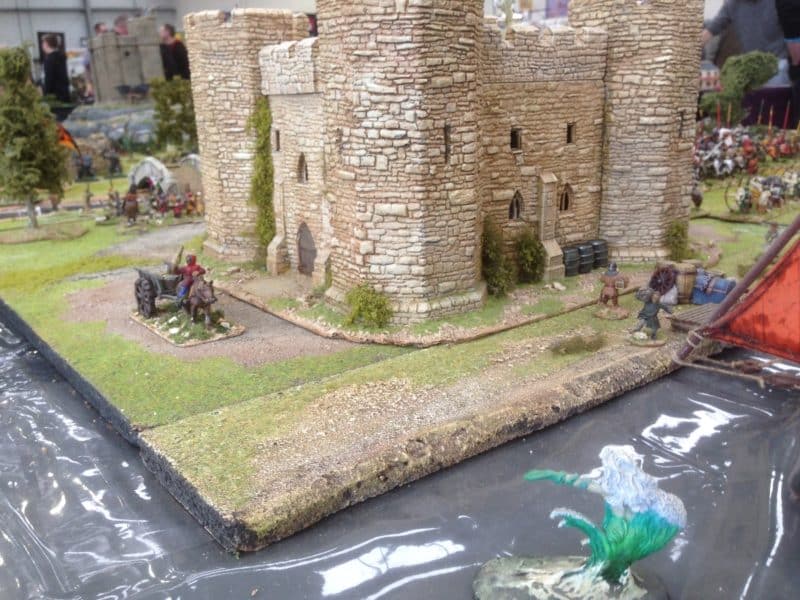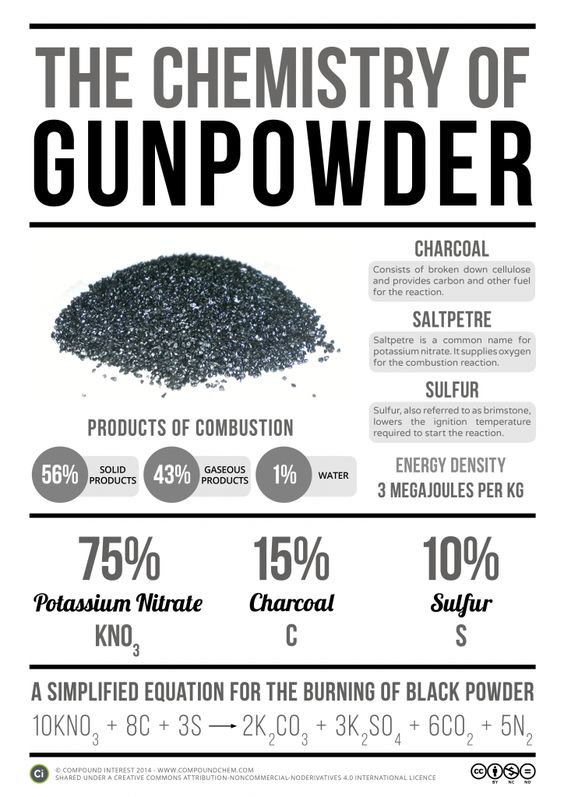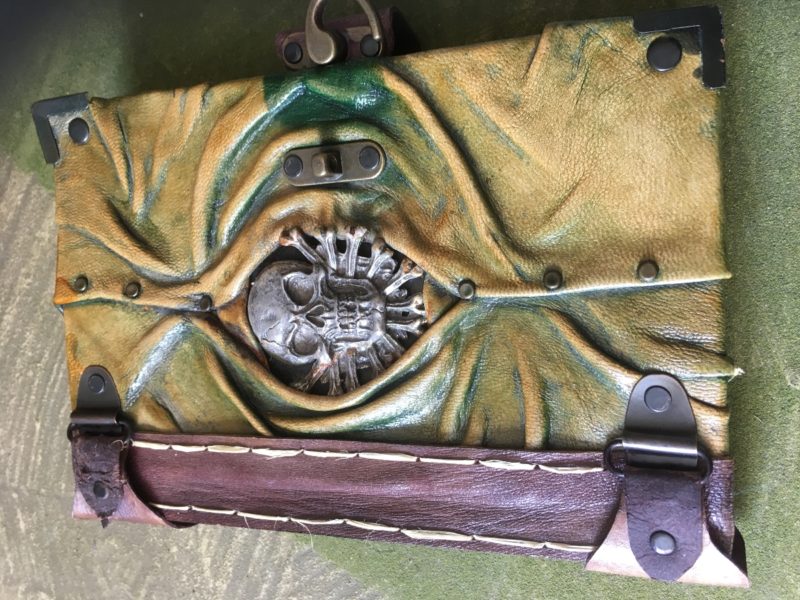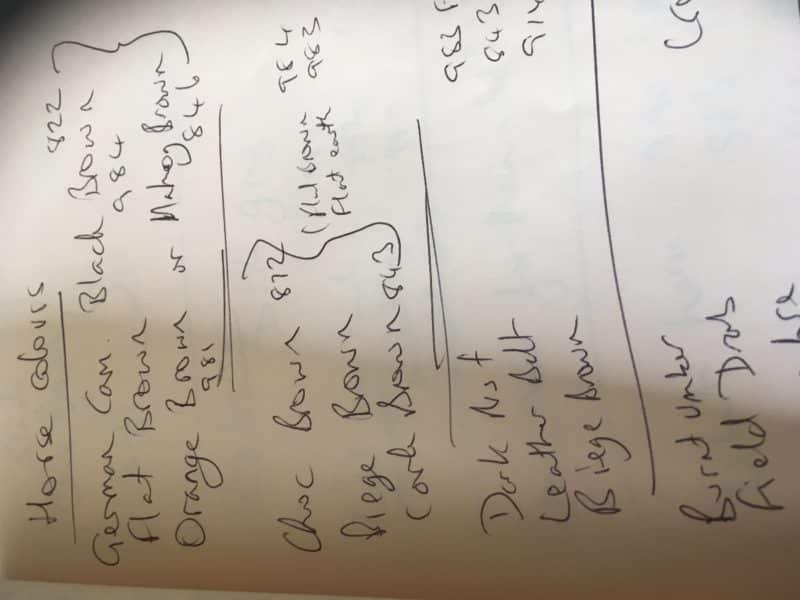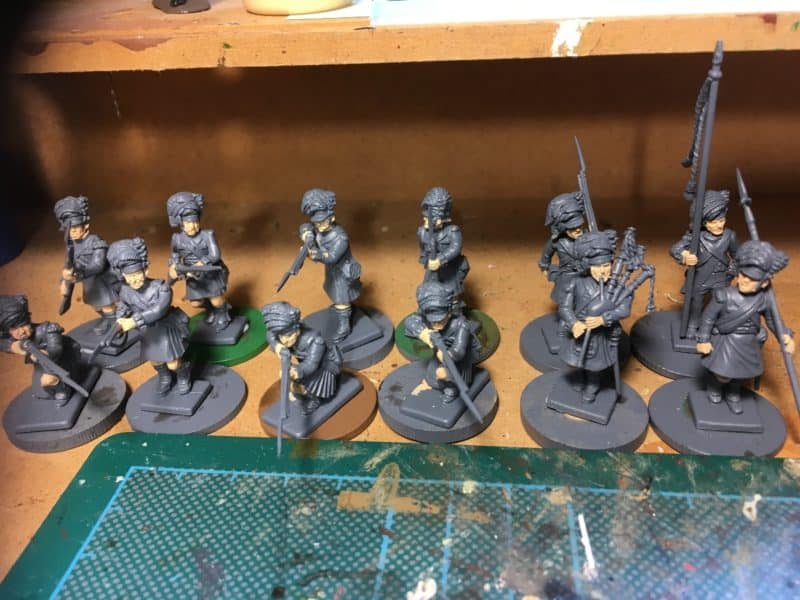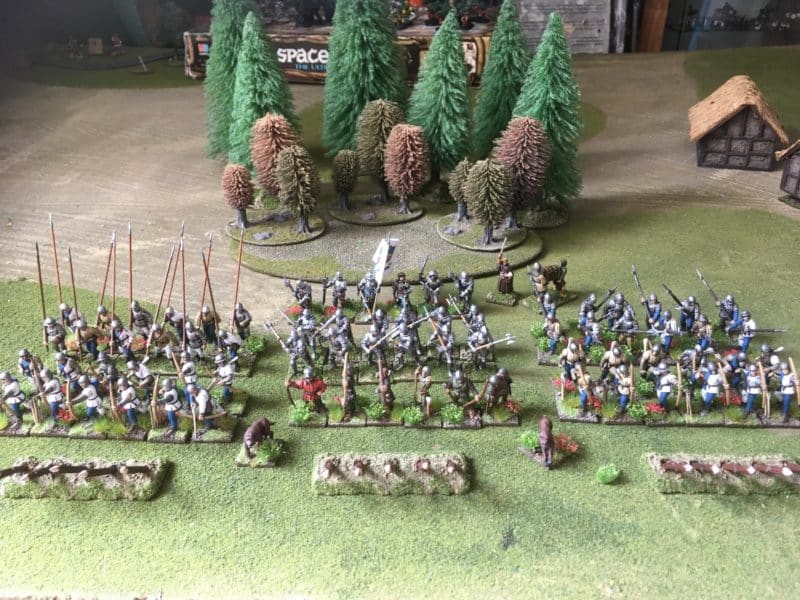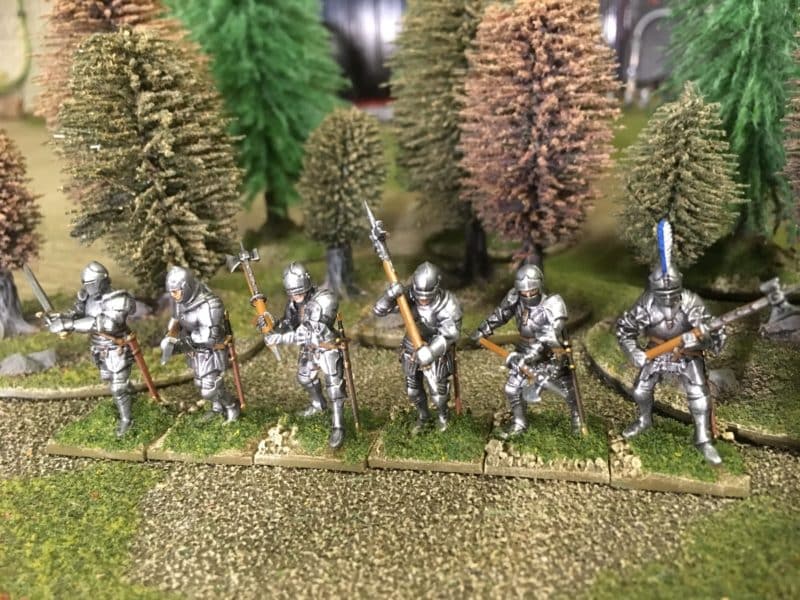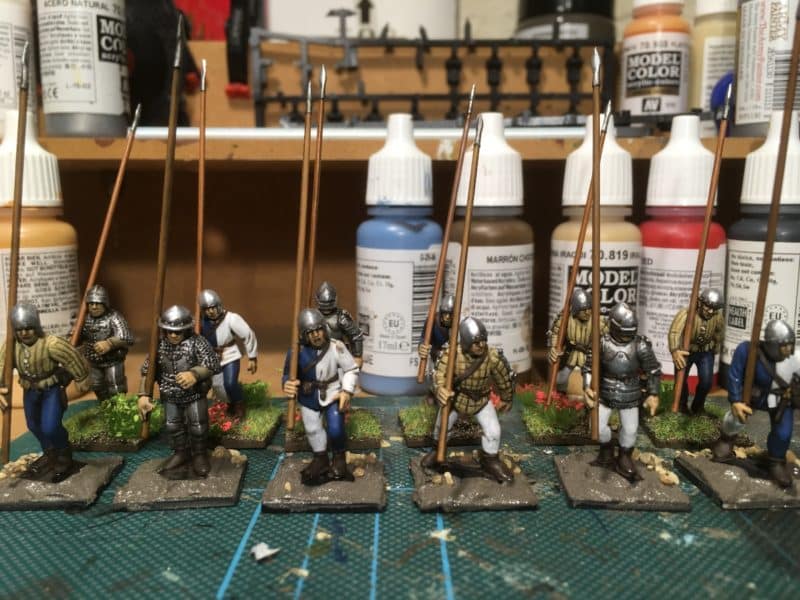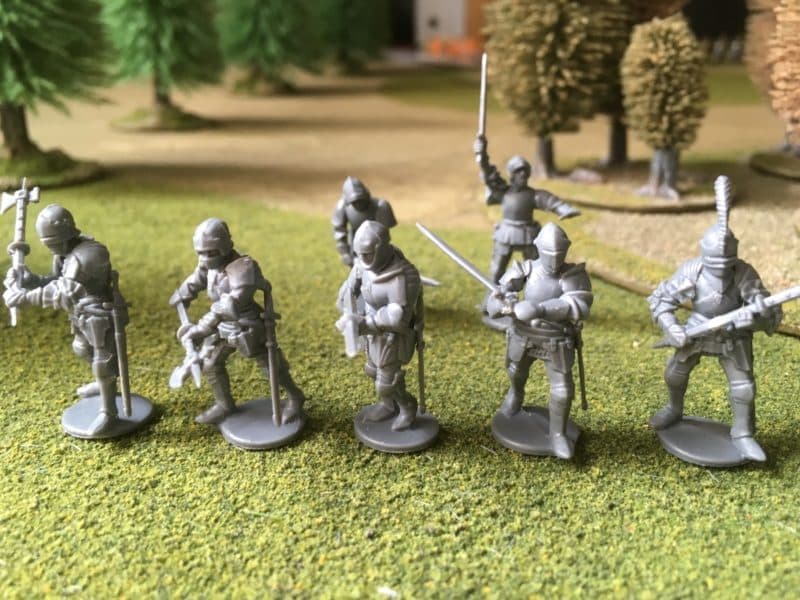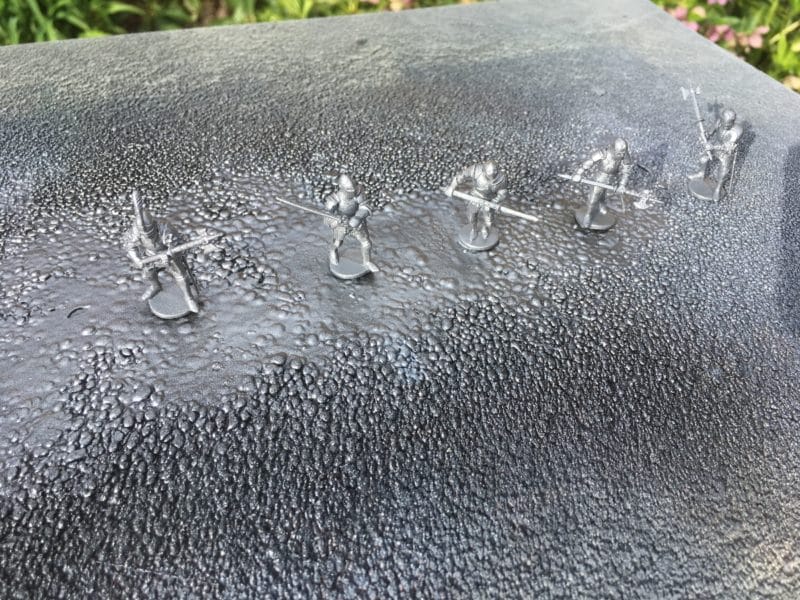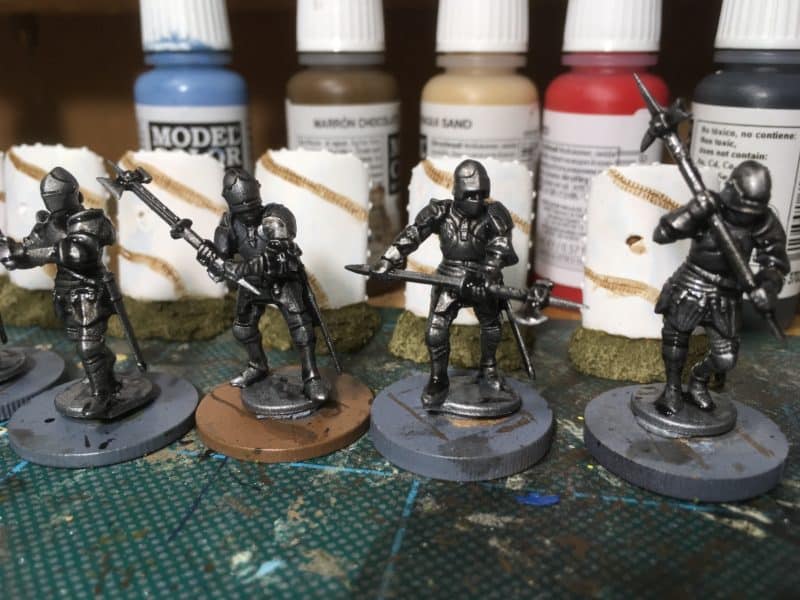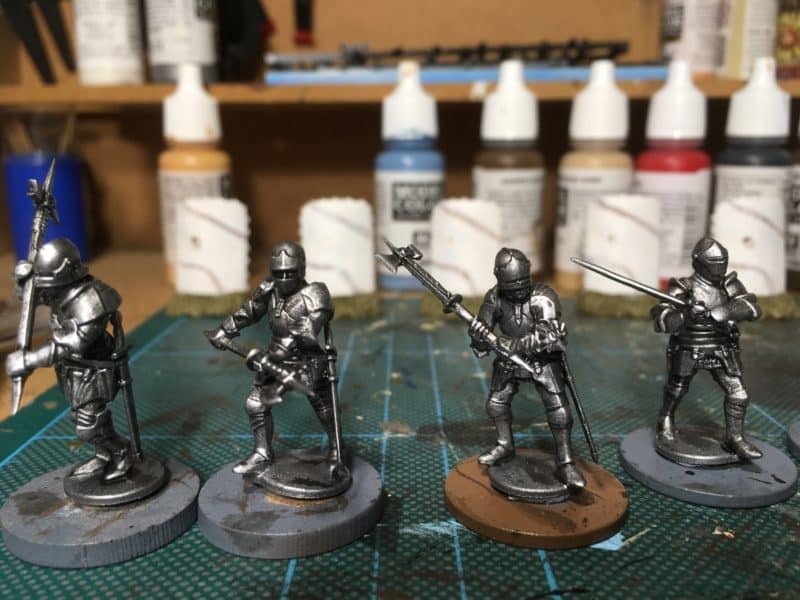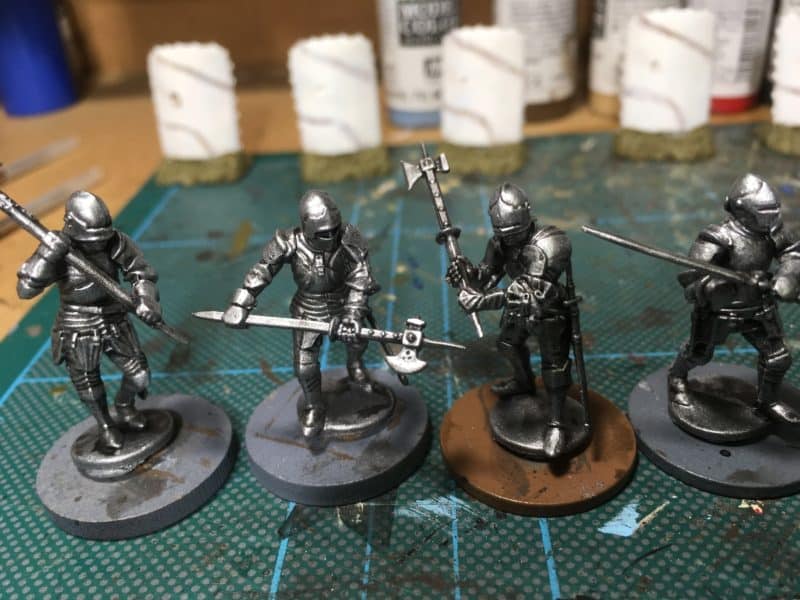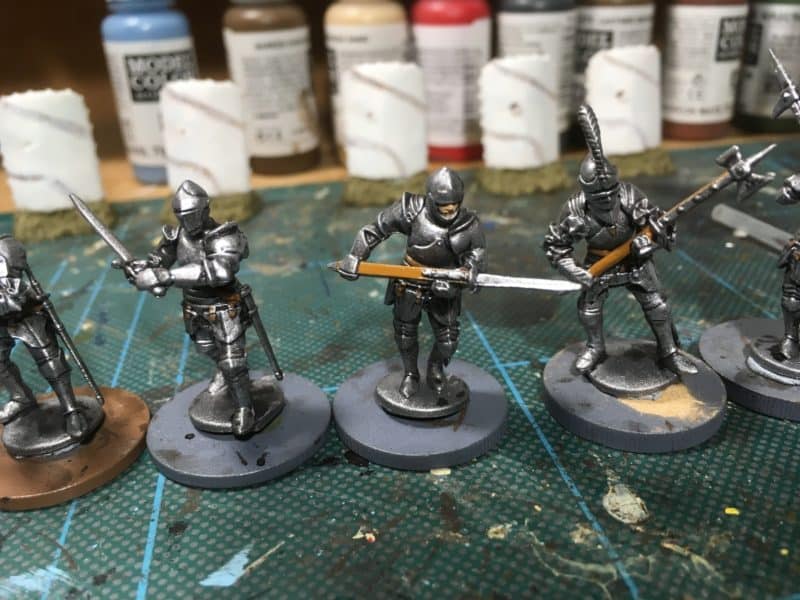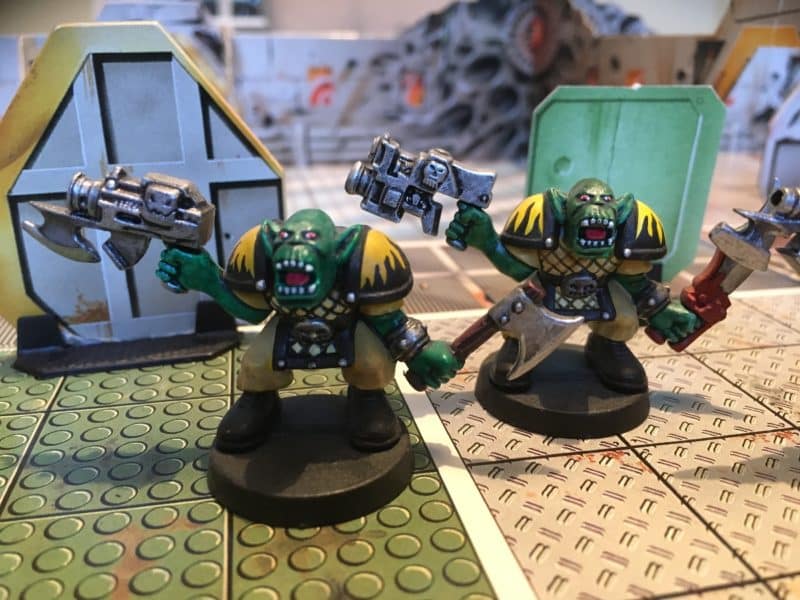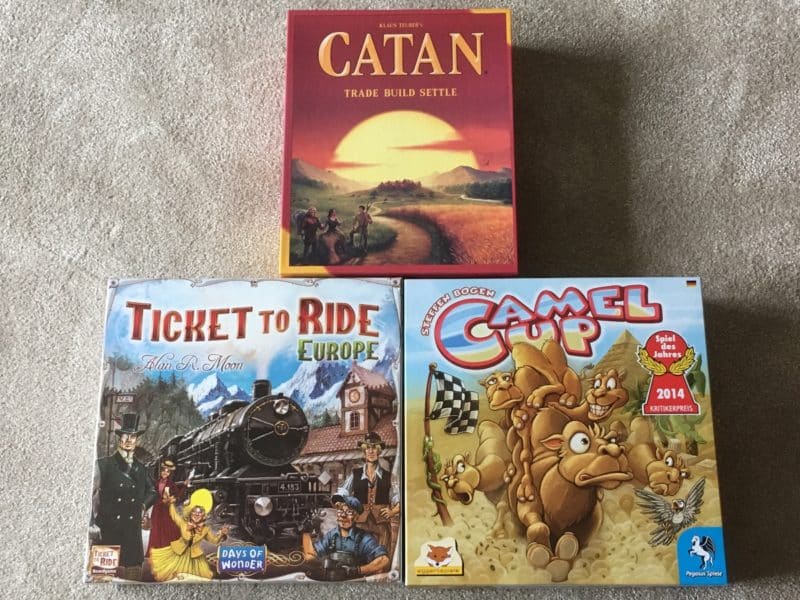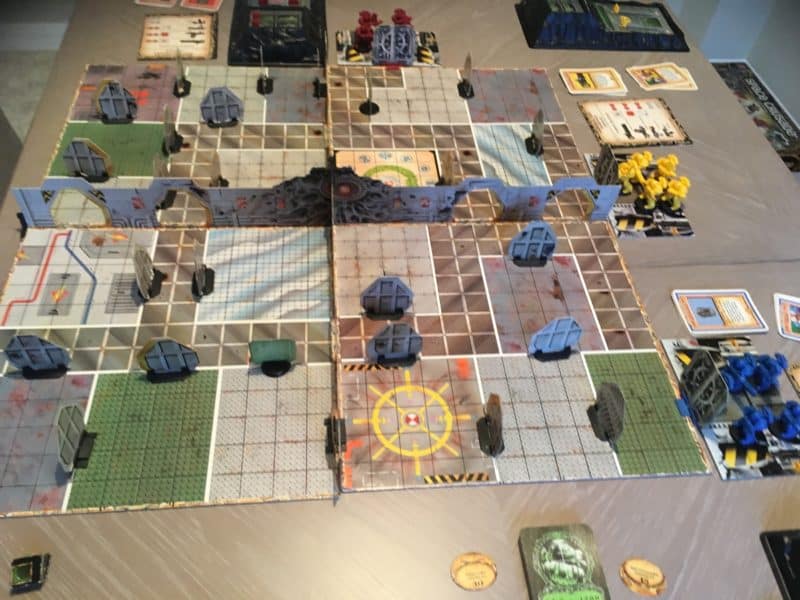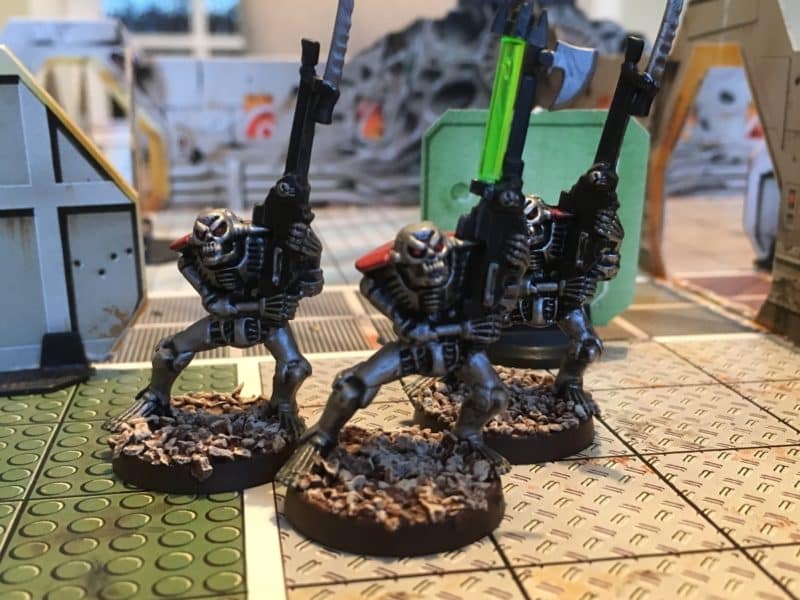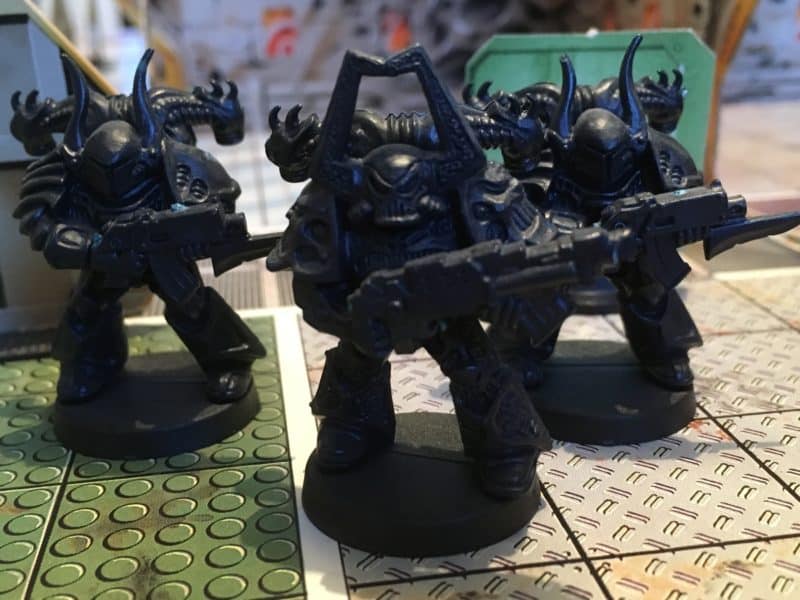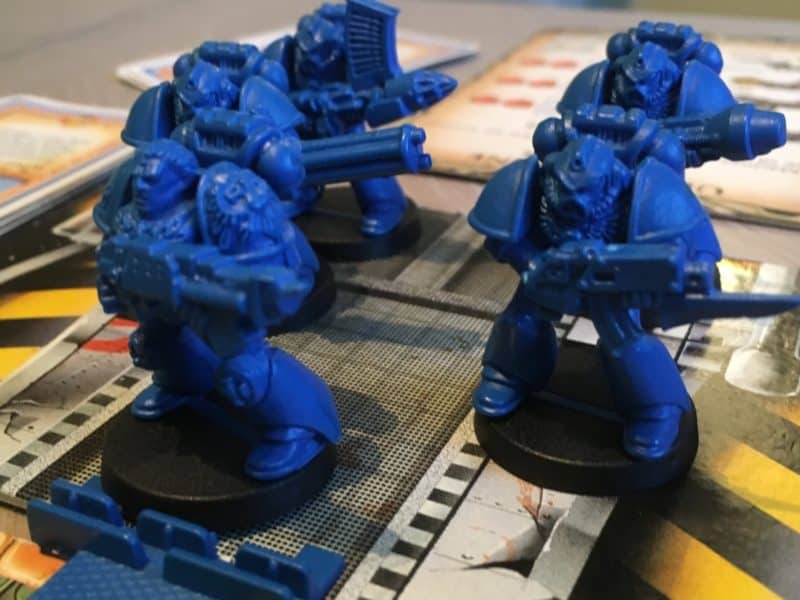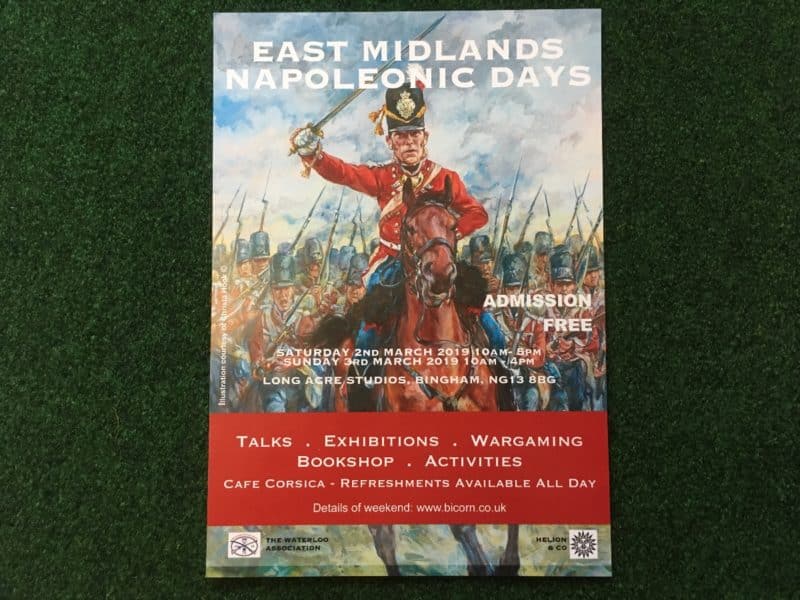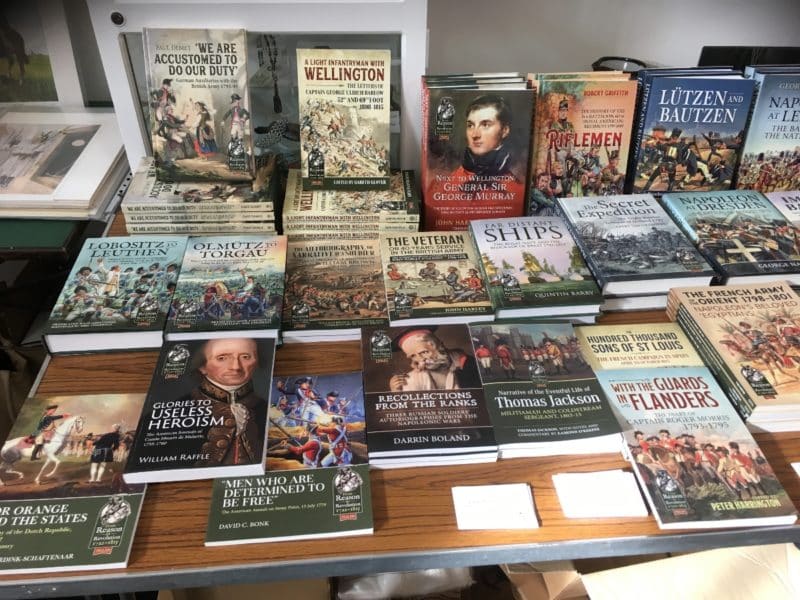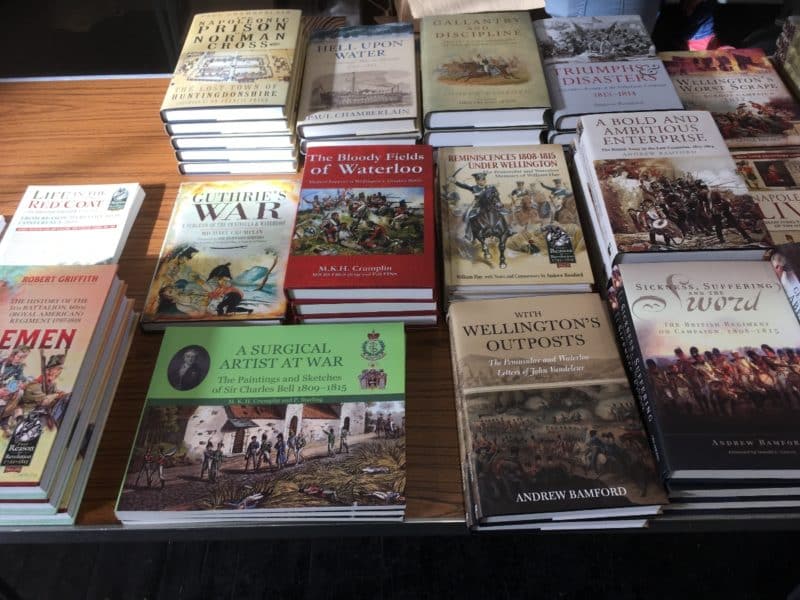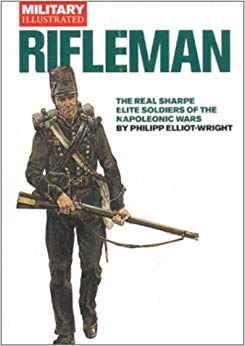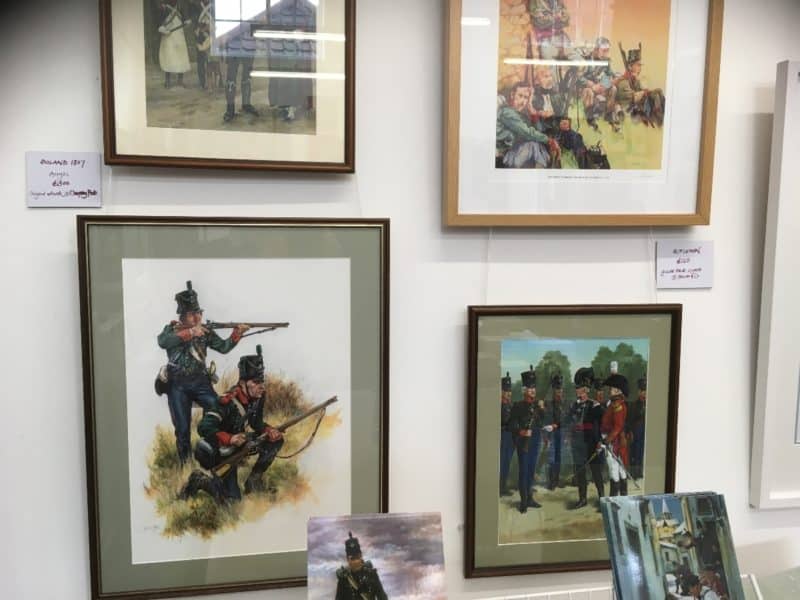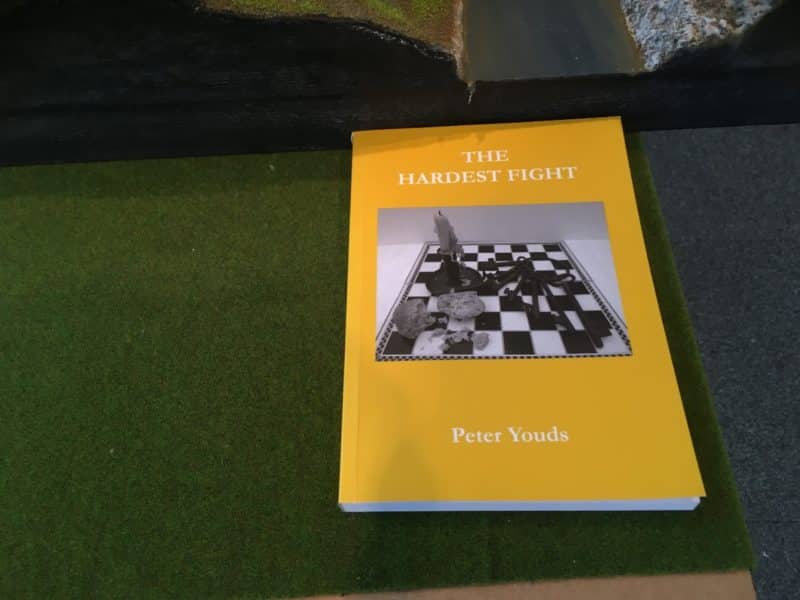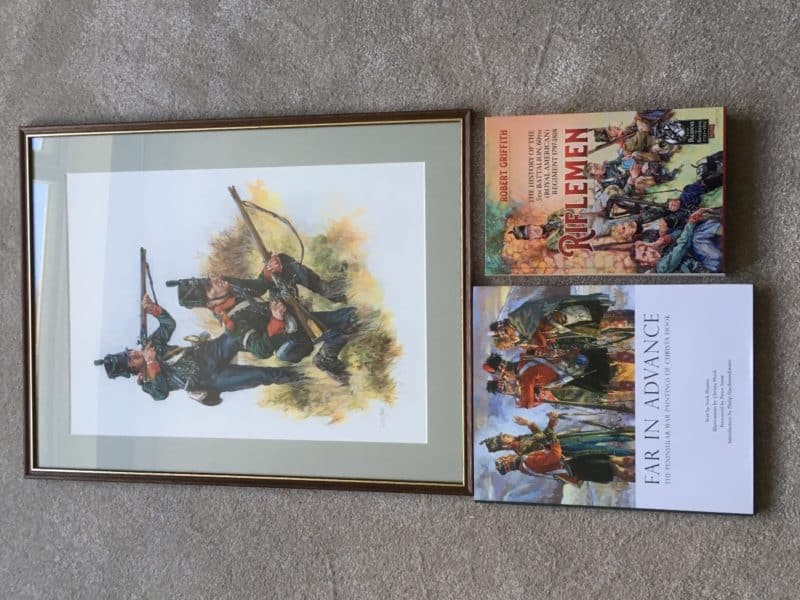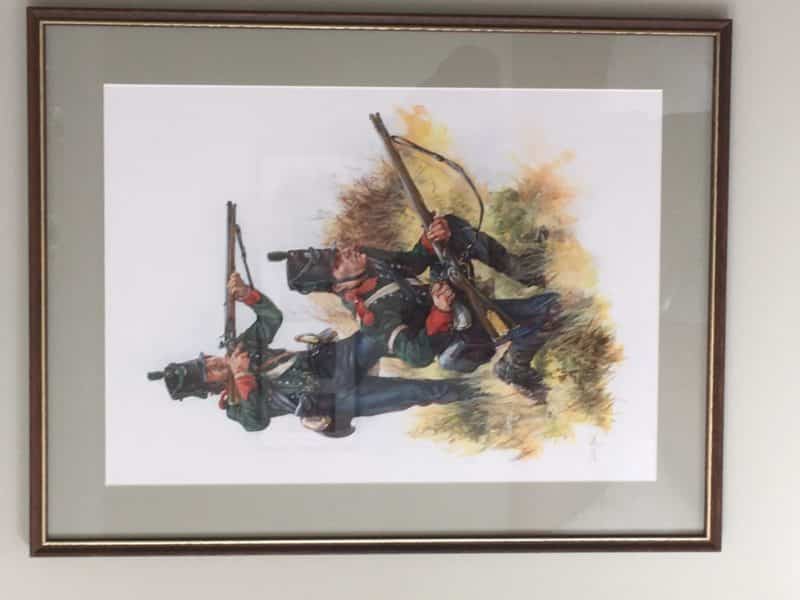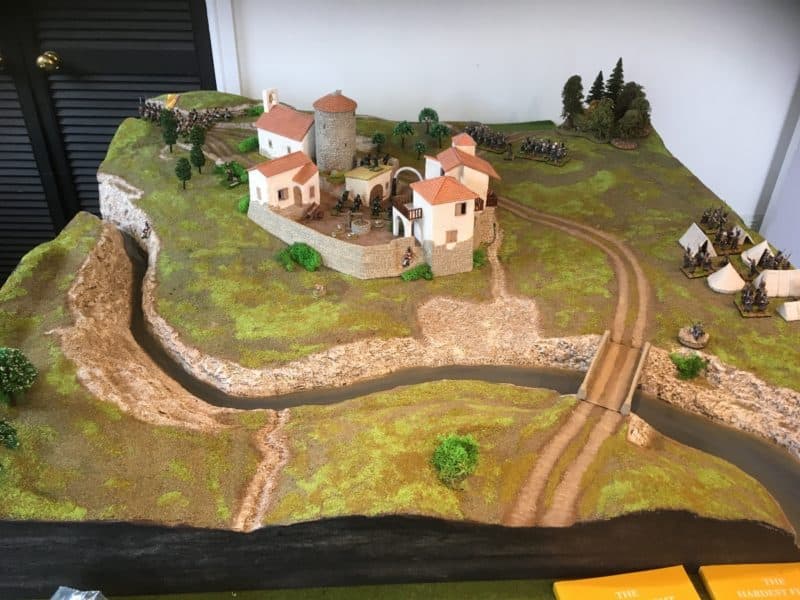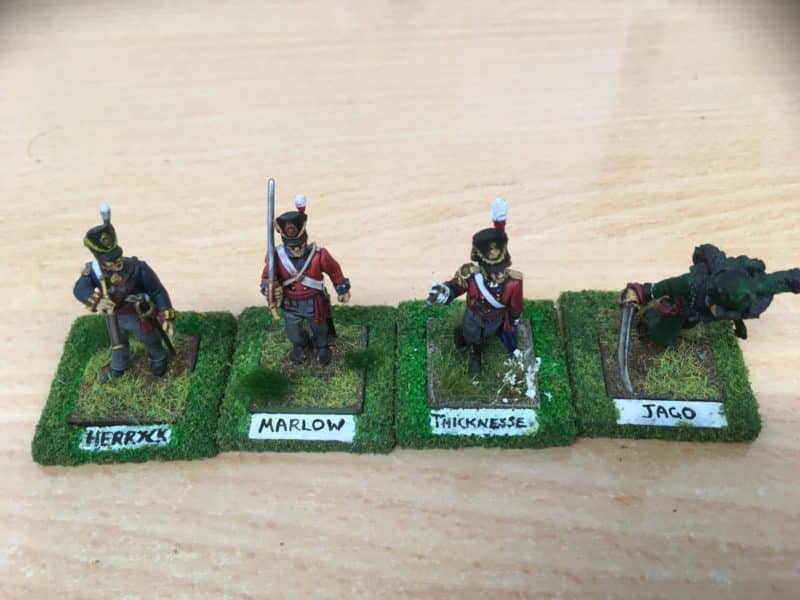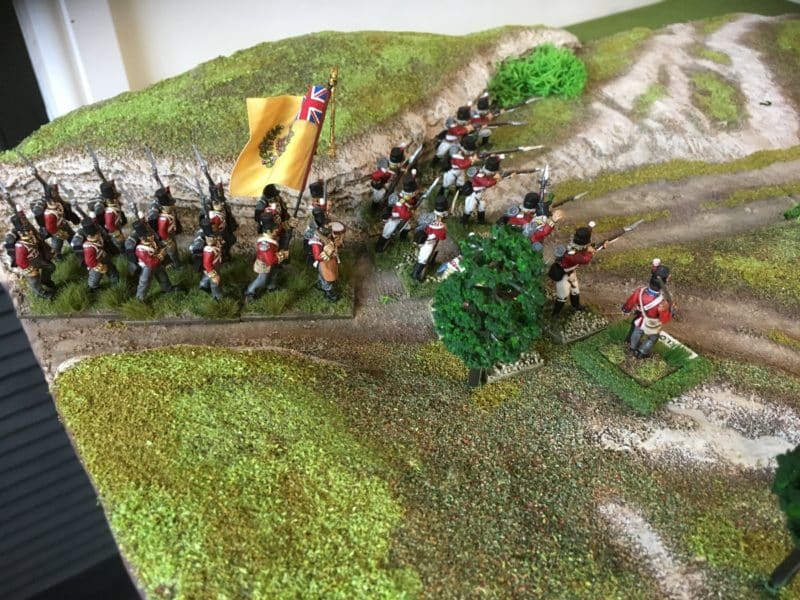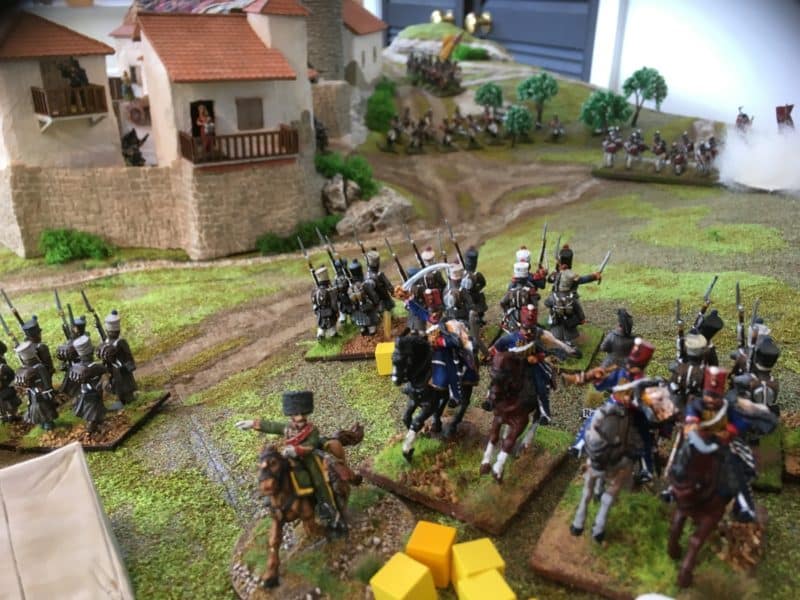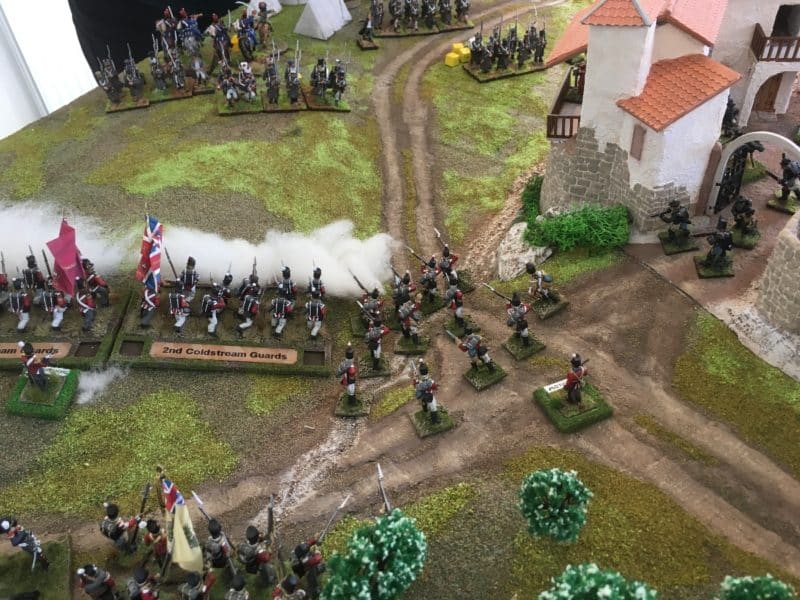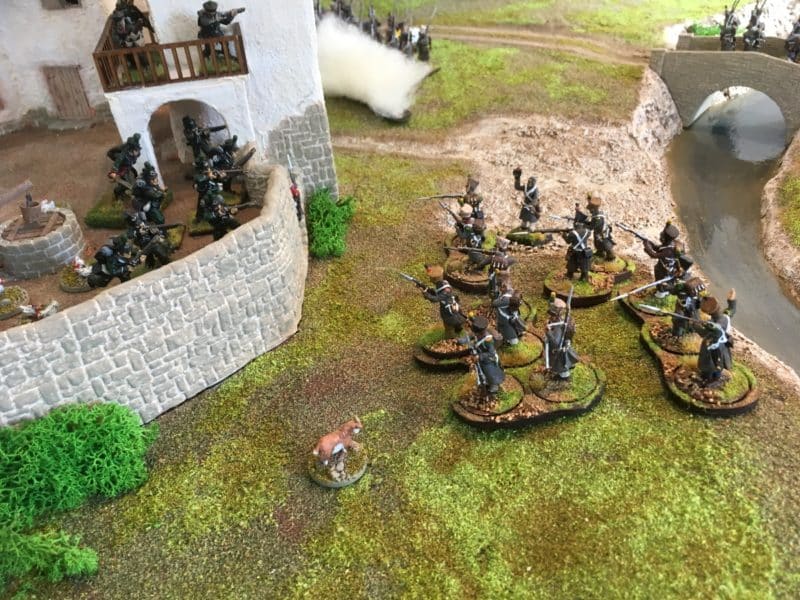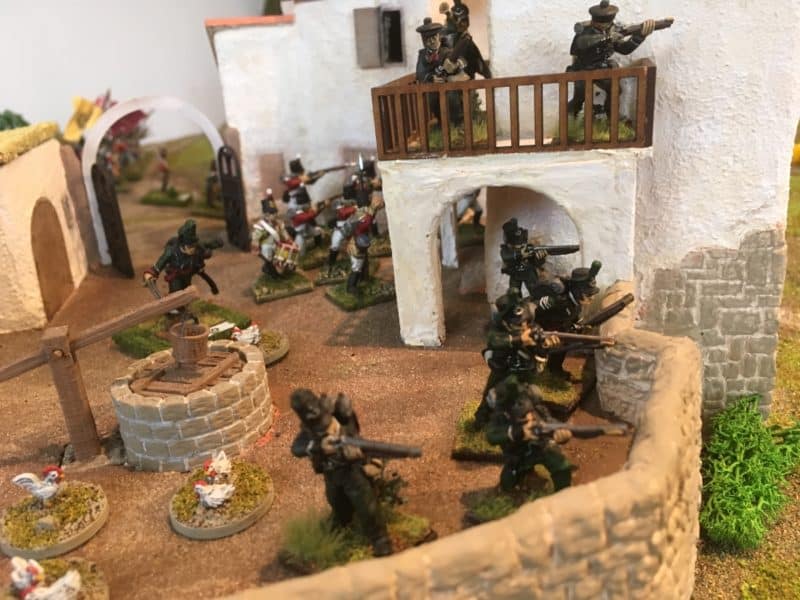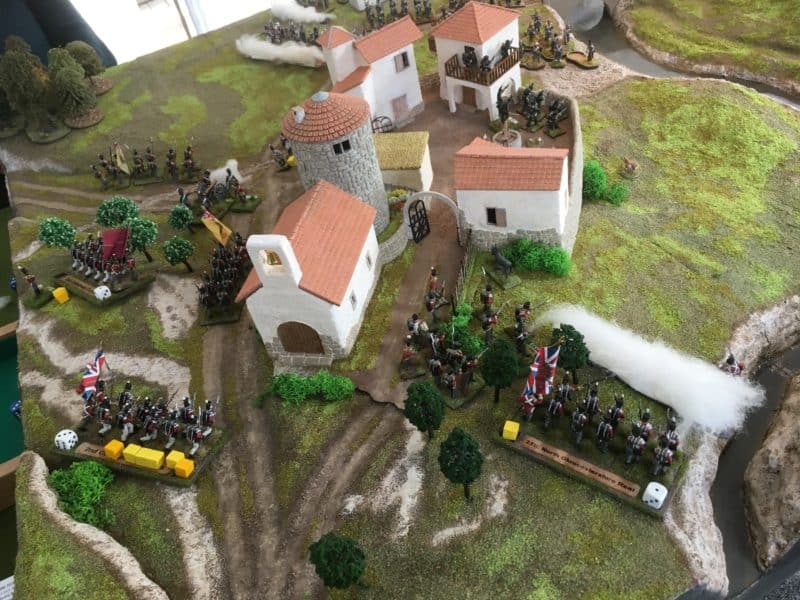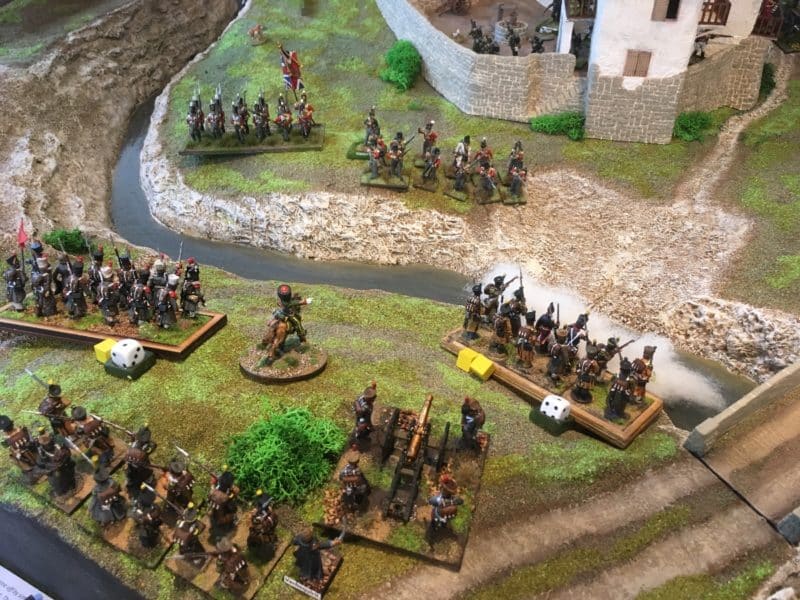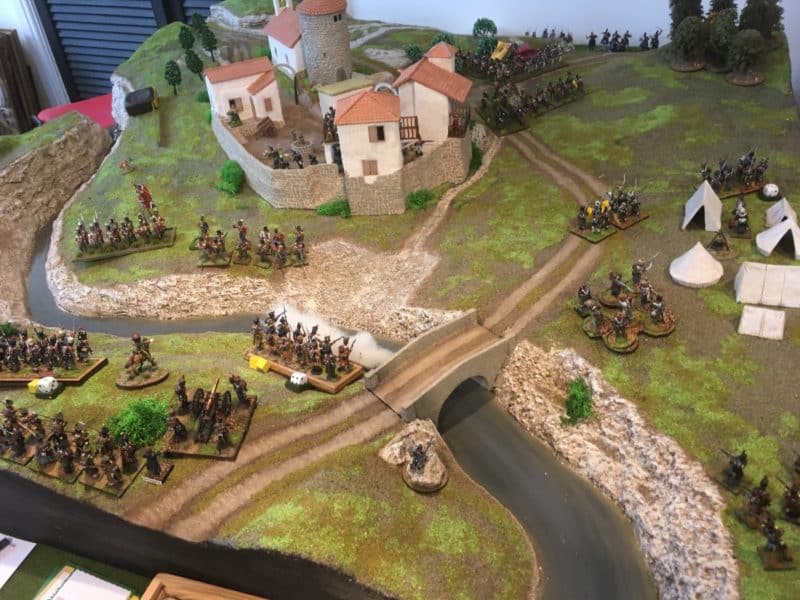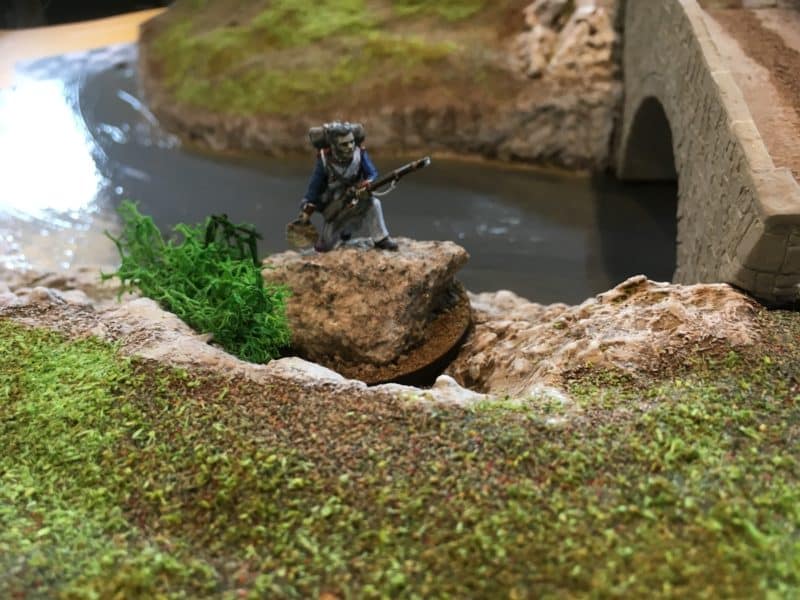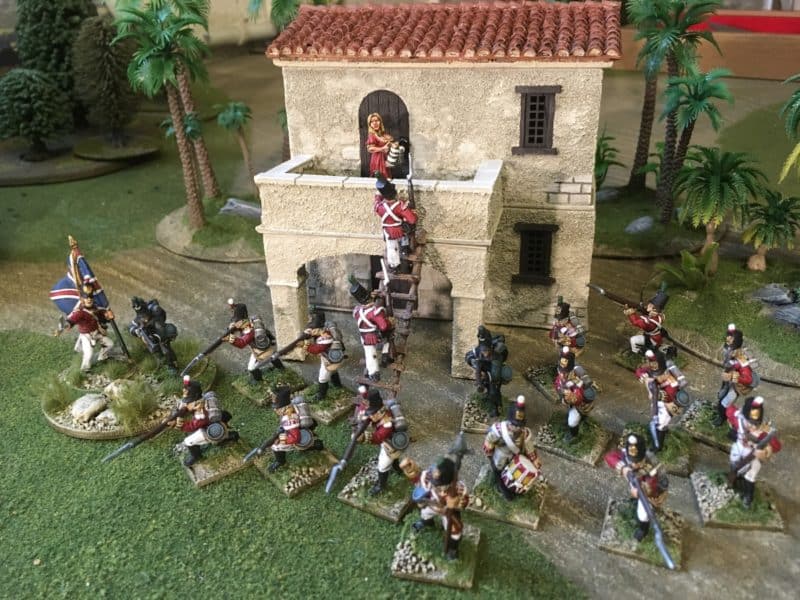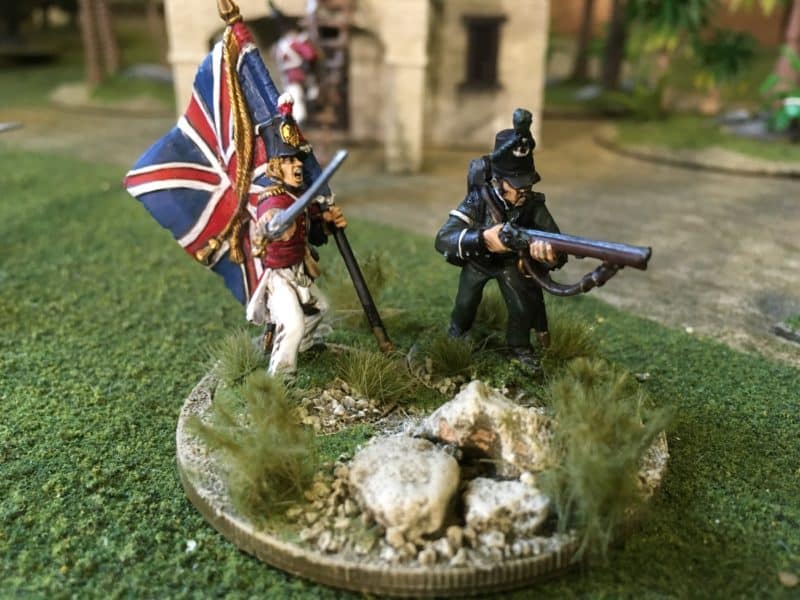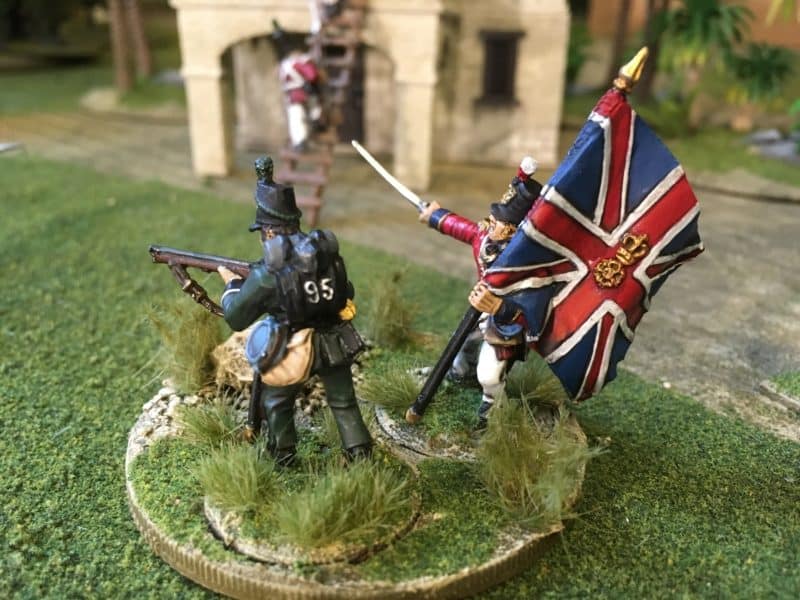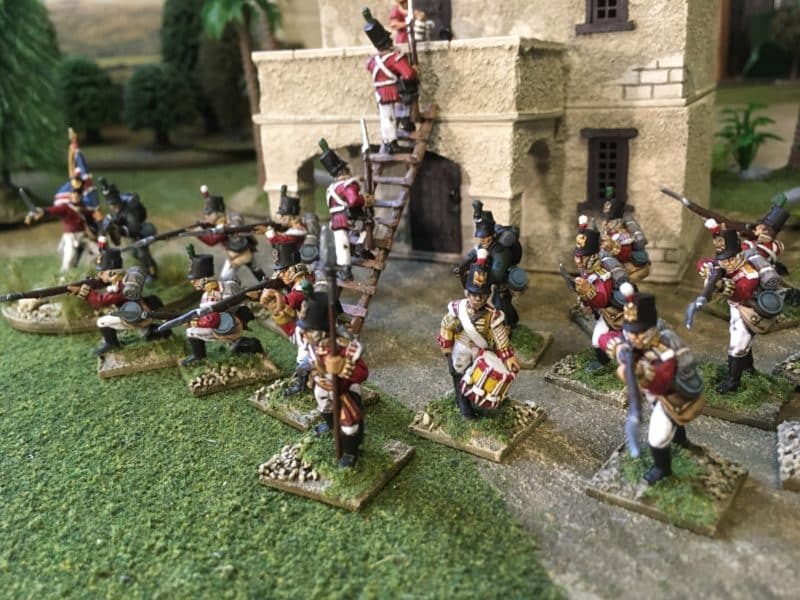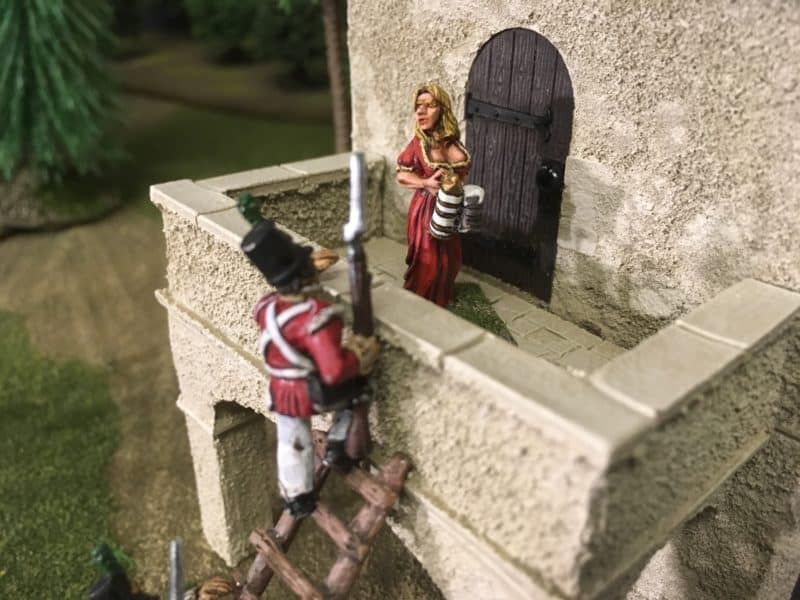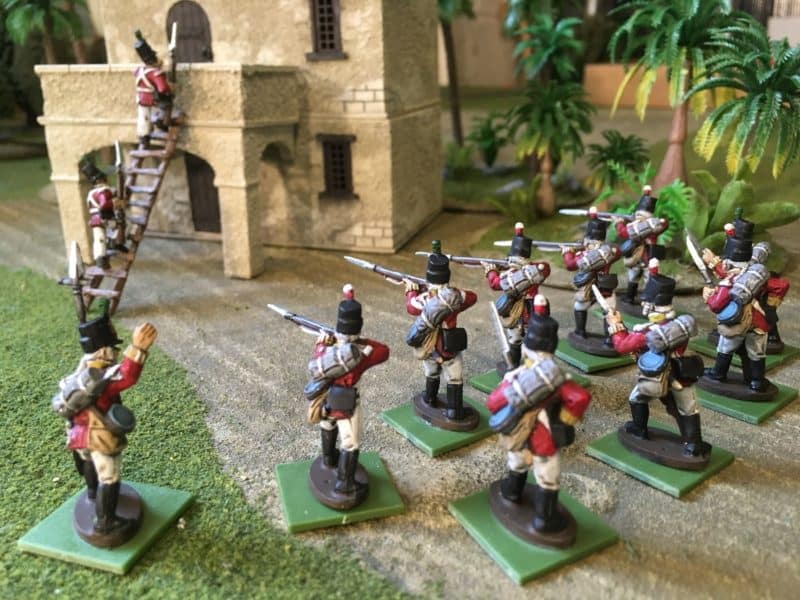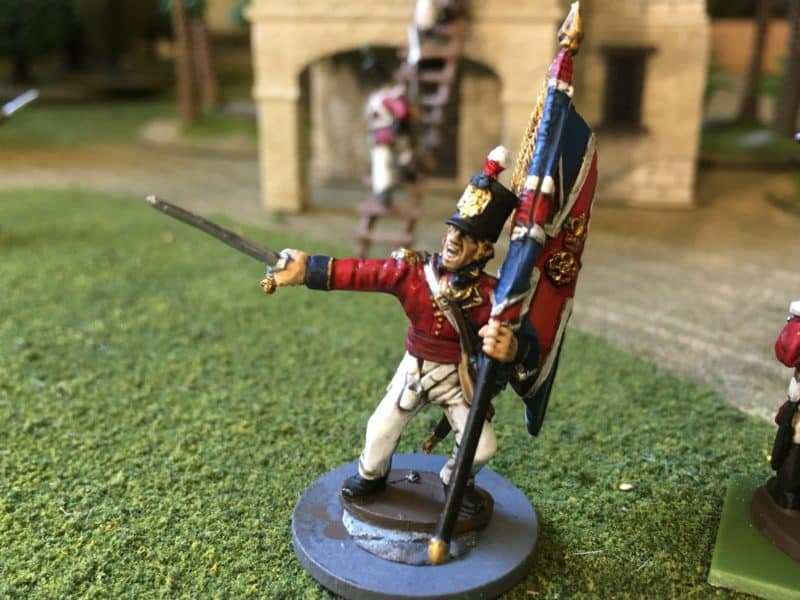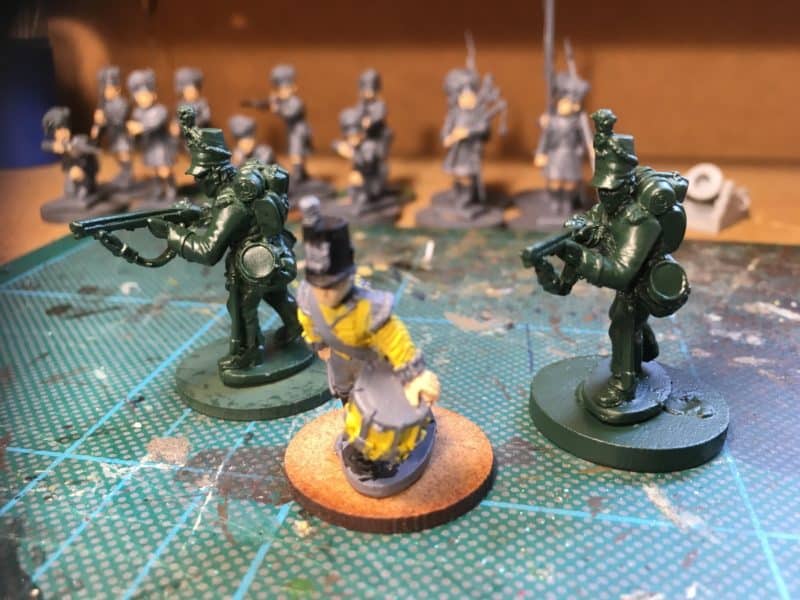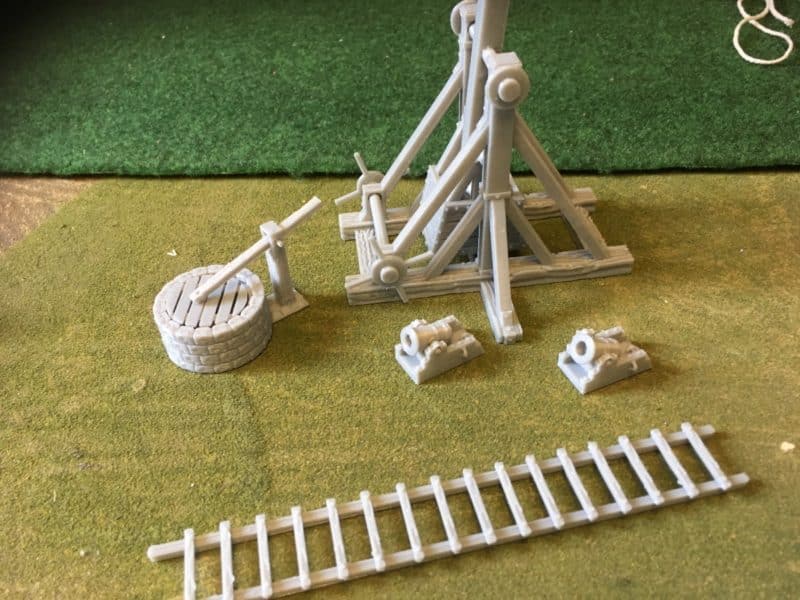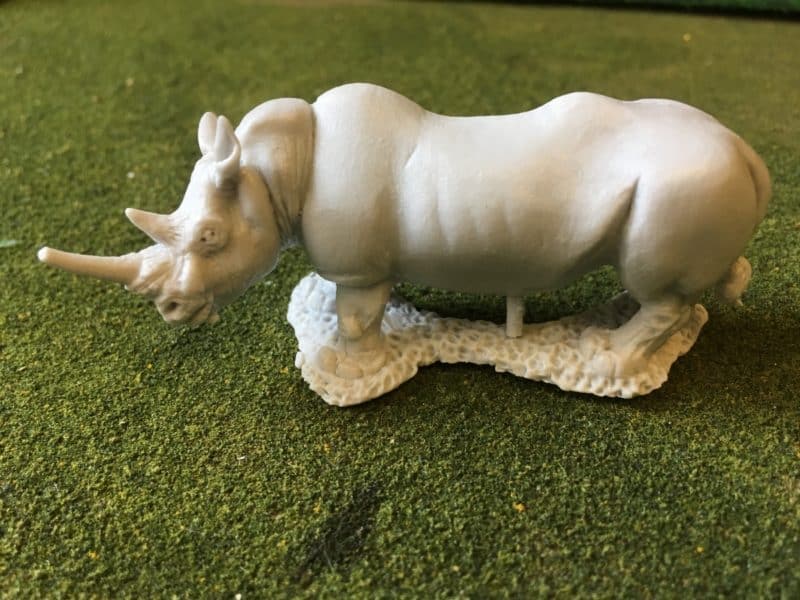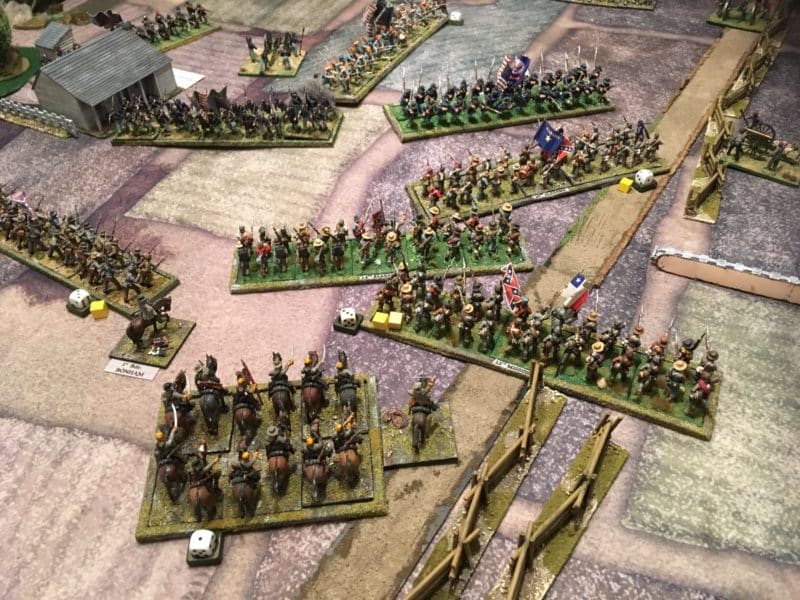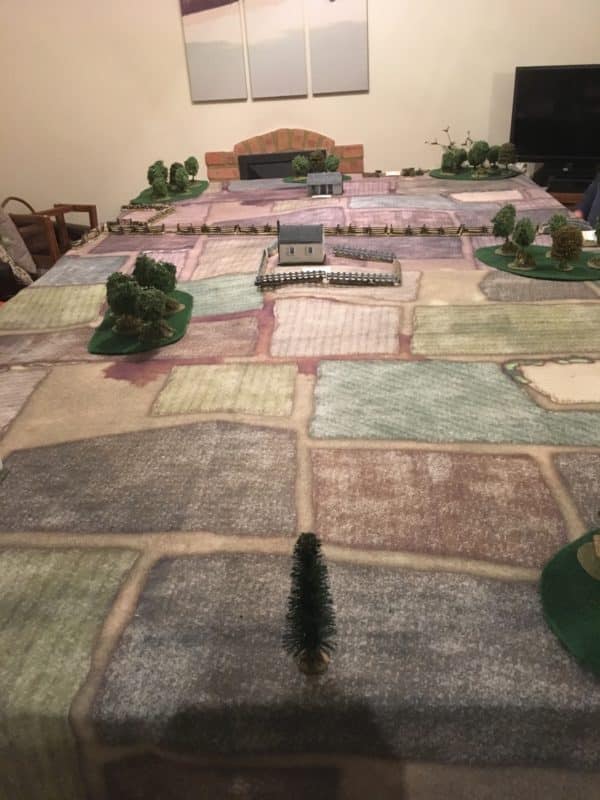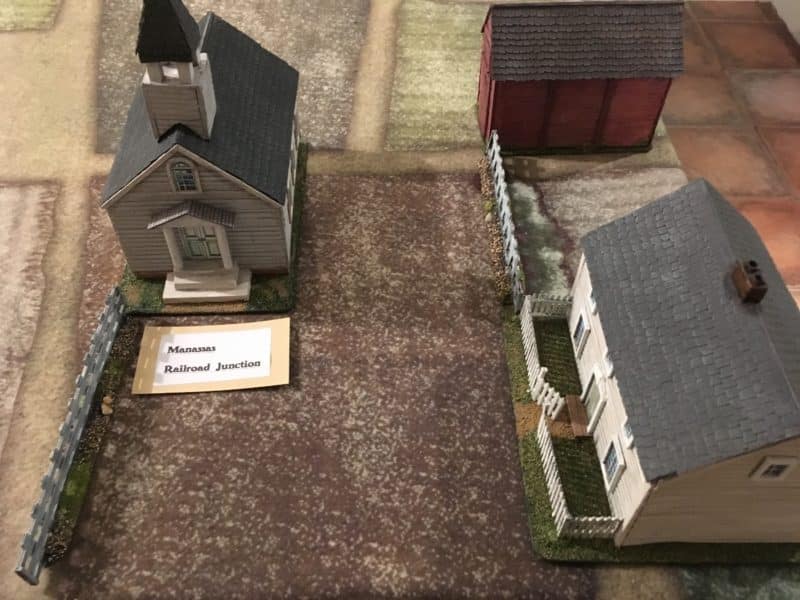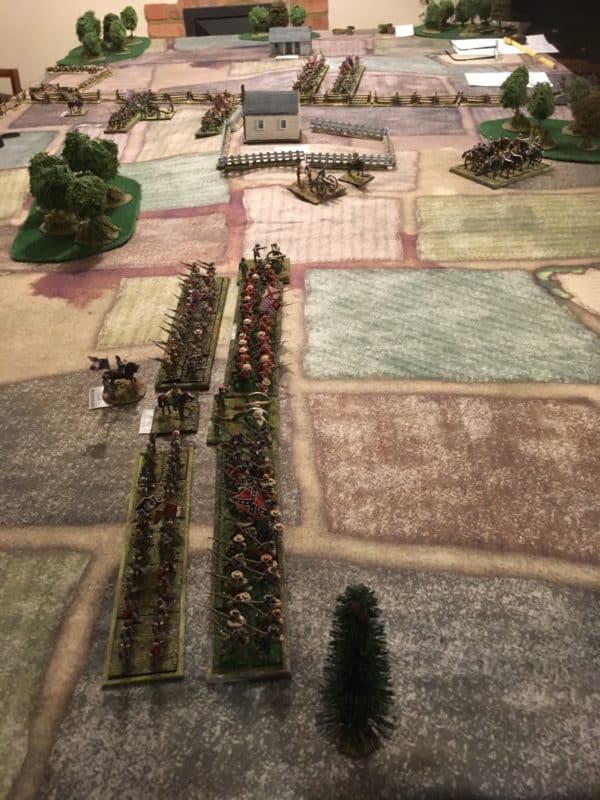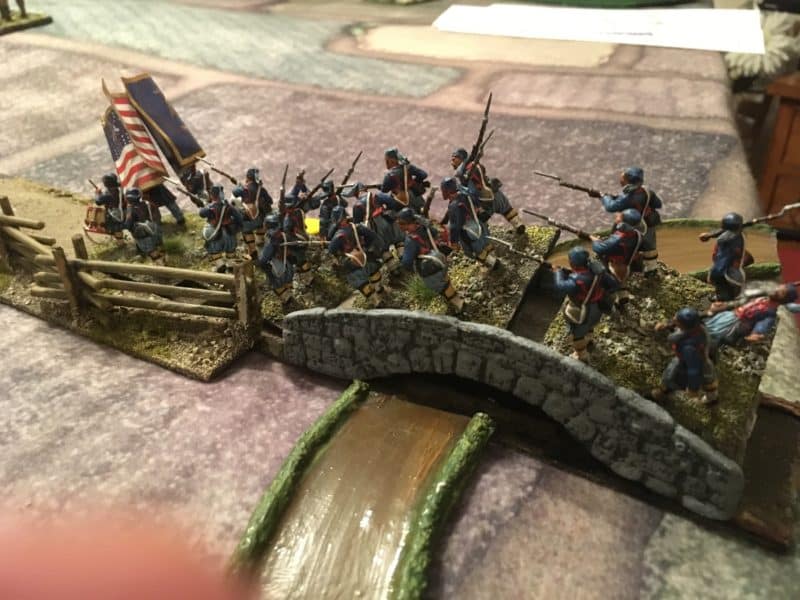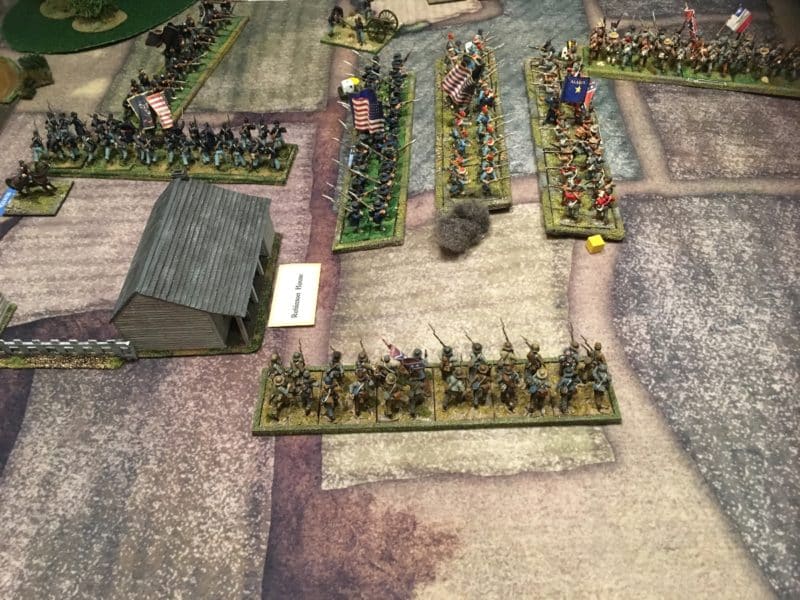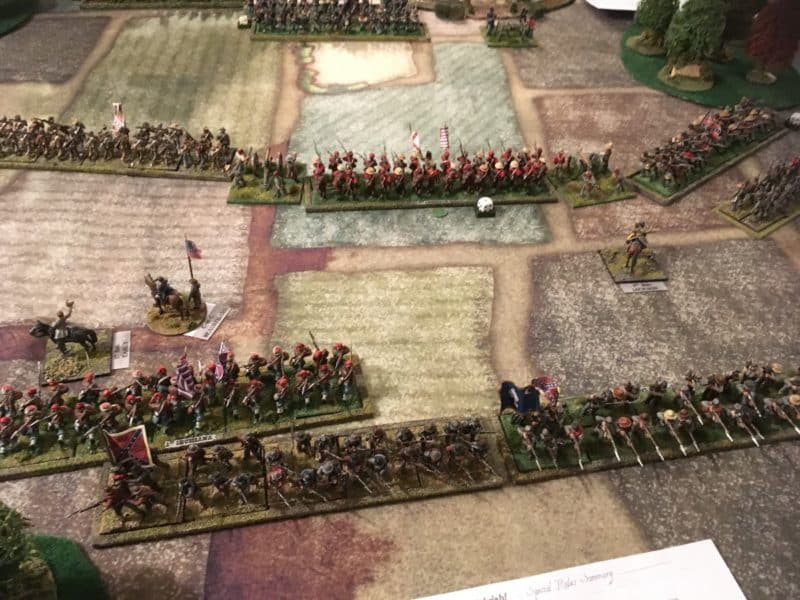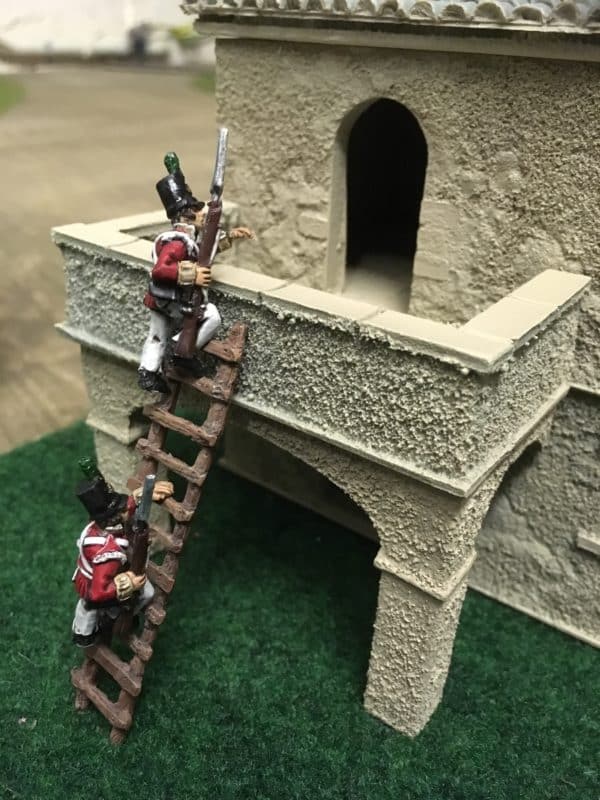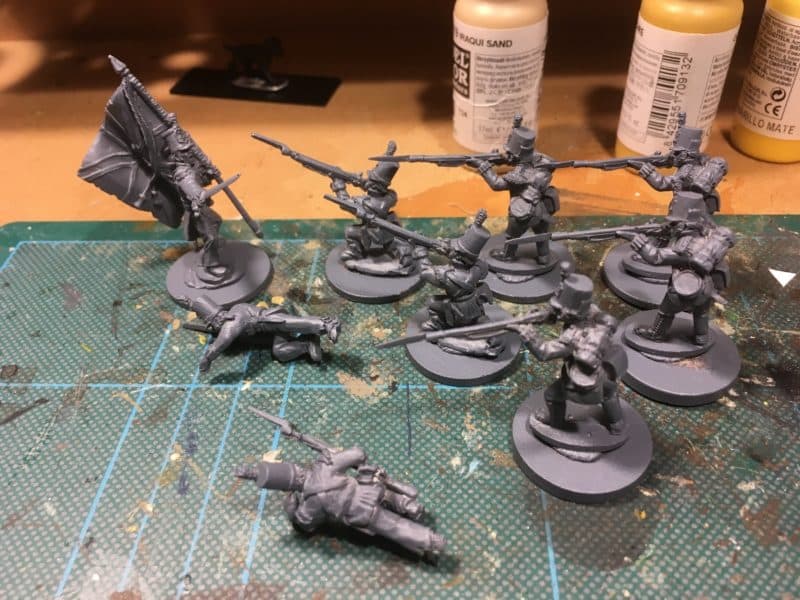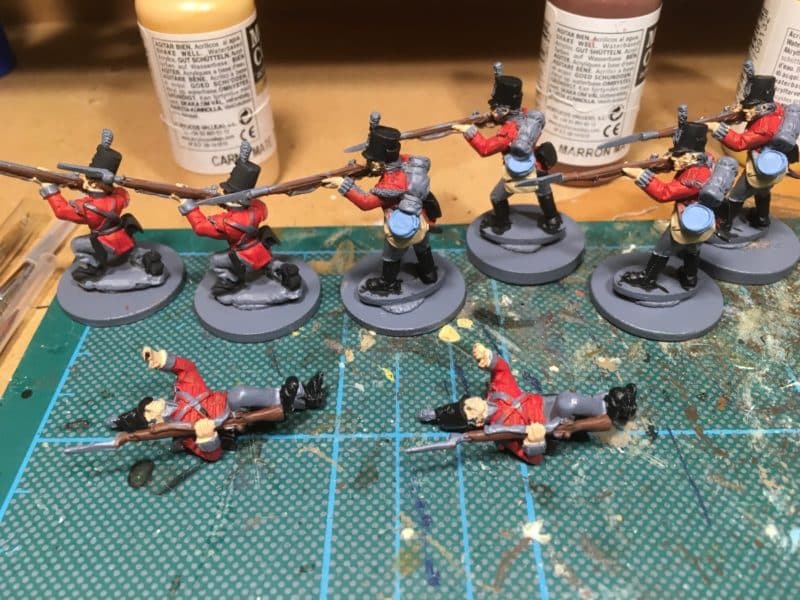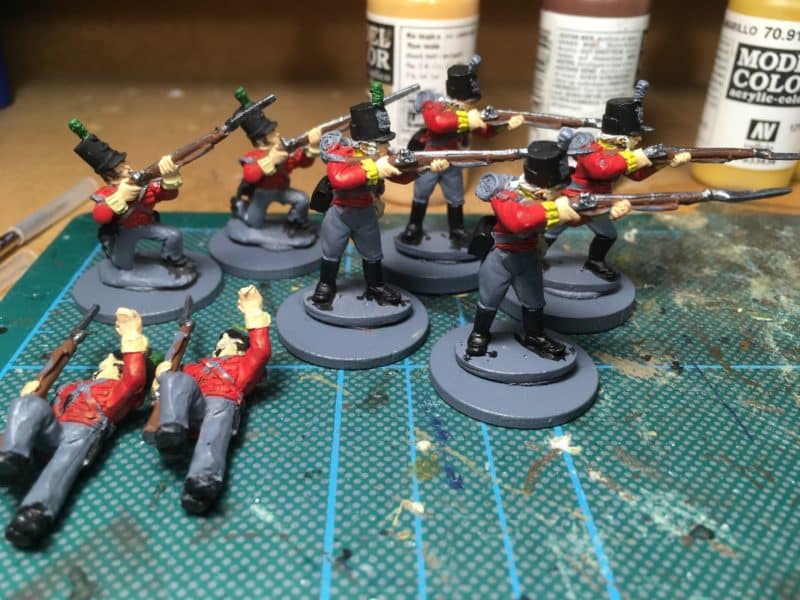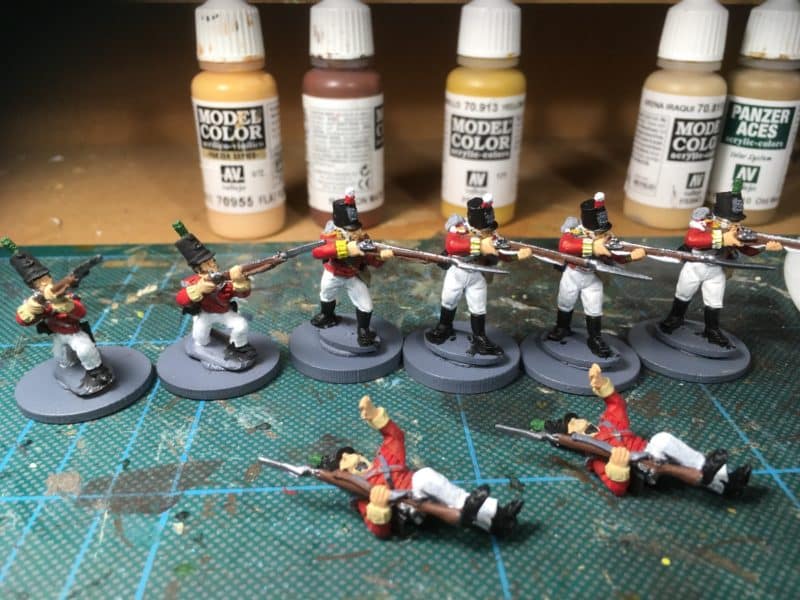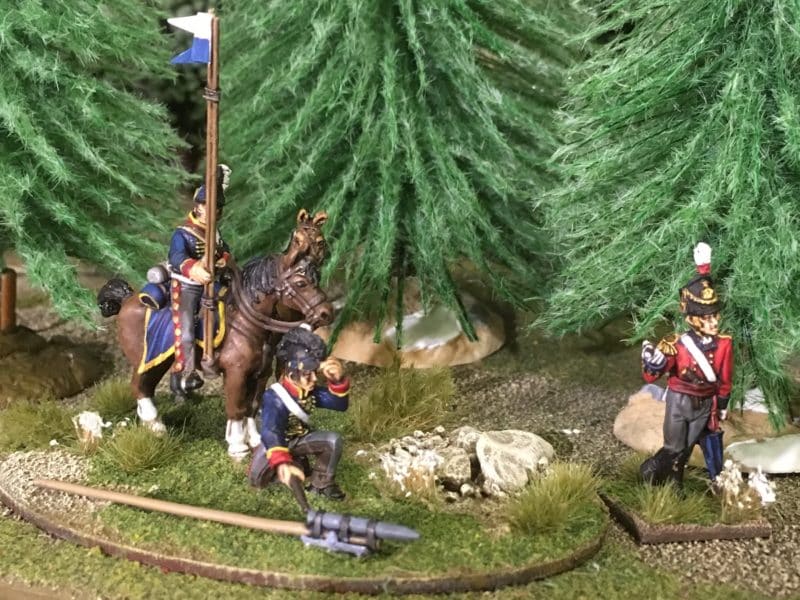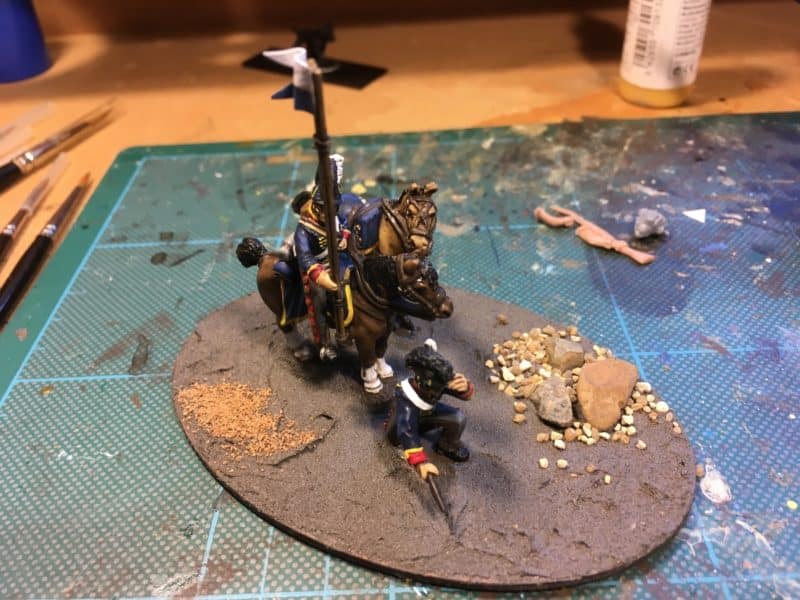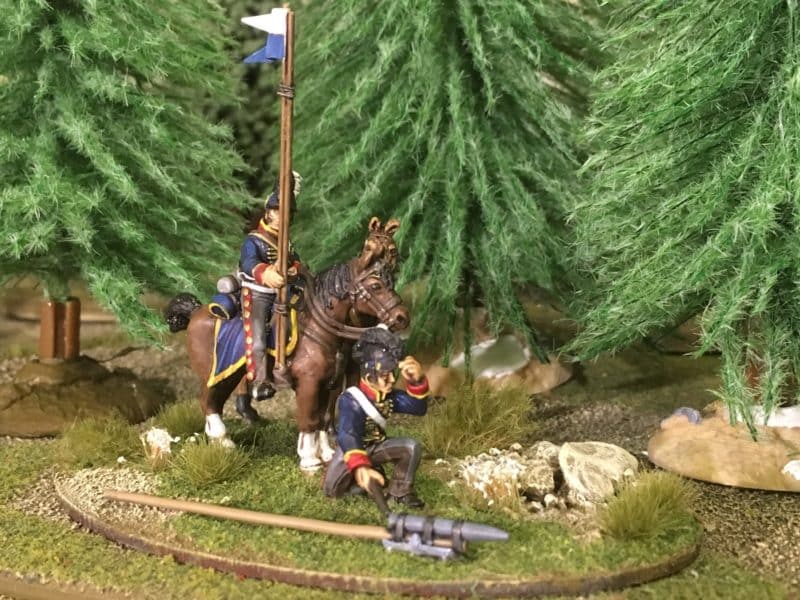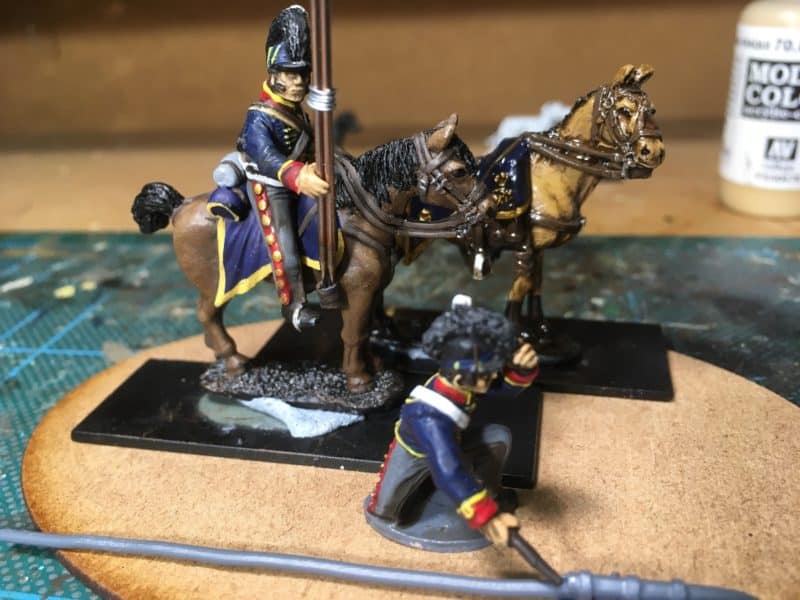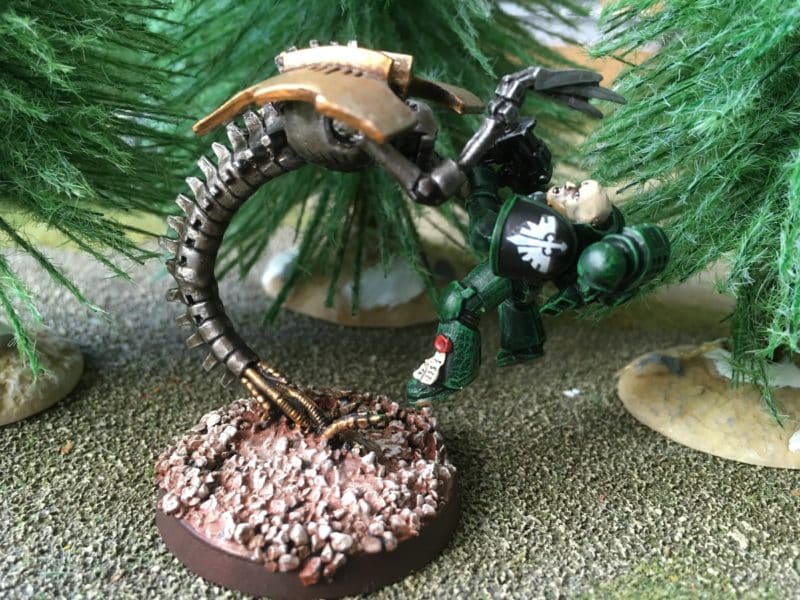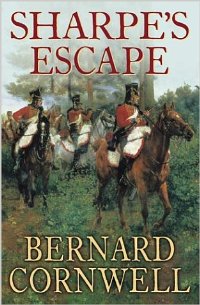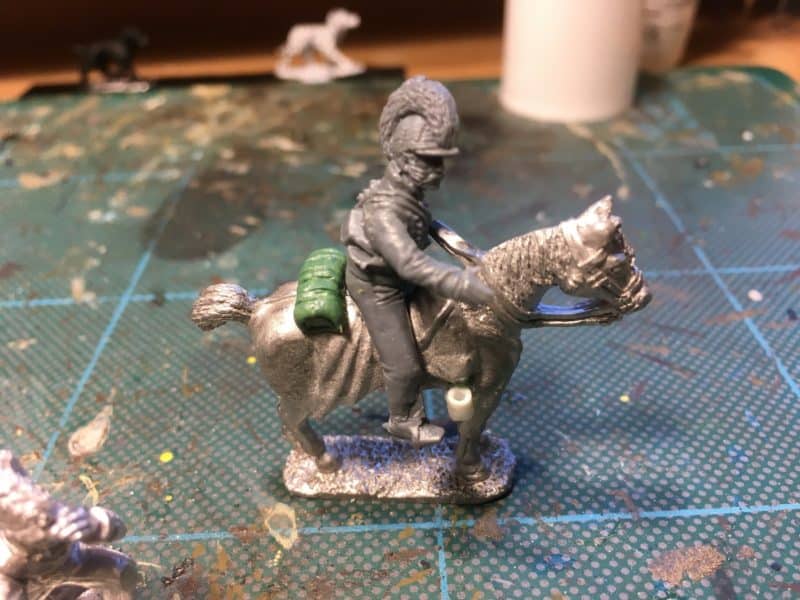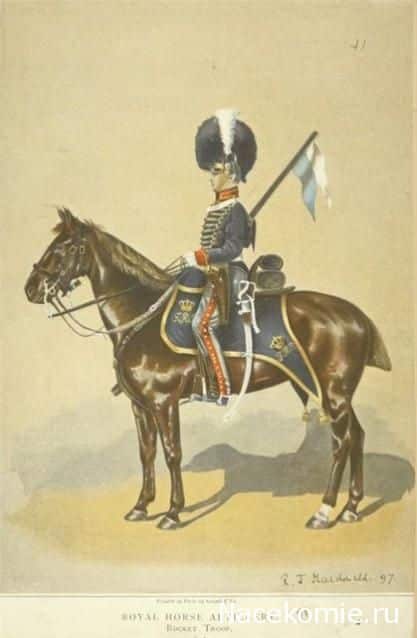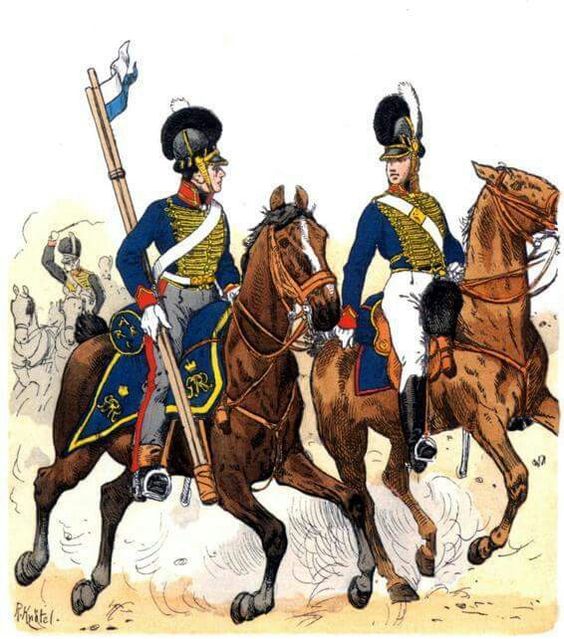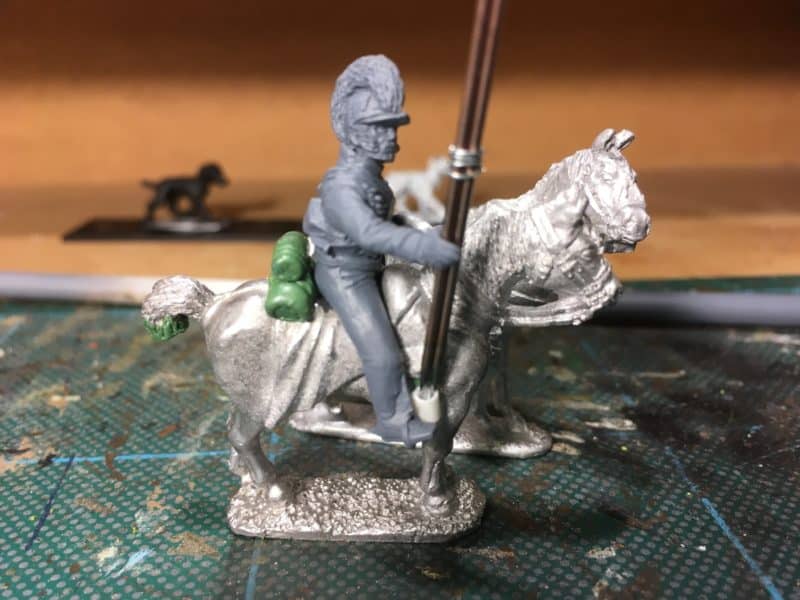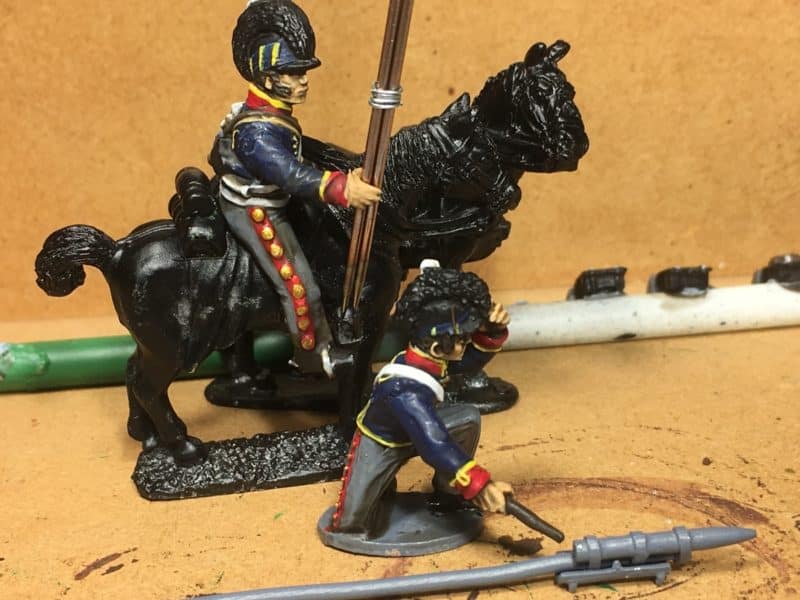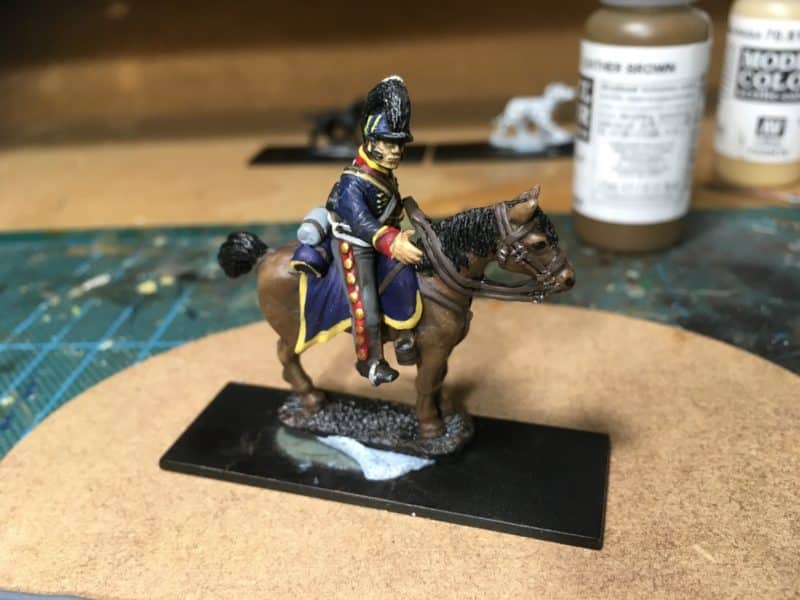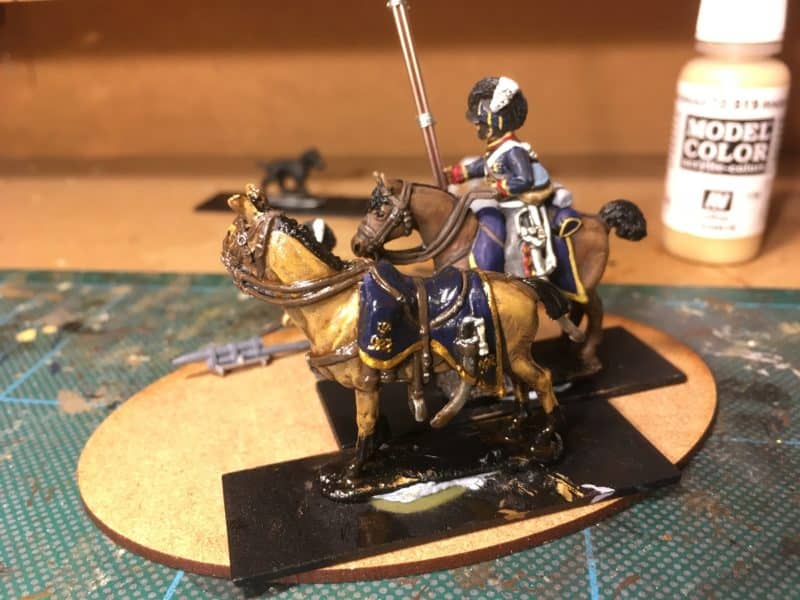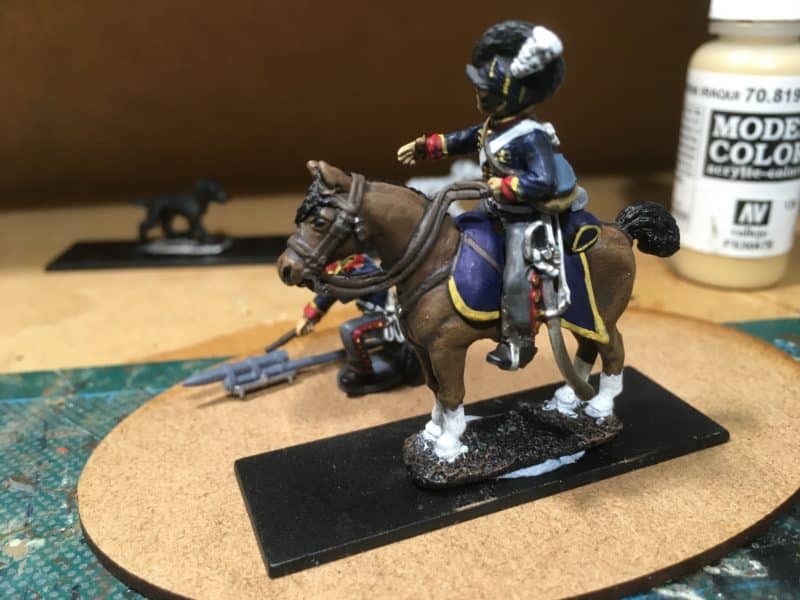My War of the Roses project gathers pace once more and before I update you with my latest progress (and explain the quote in the blog title – not WOTR, I know!), I would like to say a special thank you to Martin Stephenson and Vexillia. Martin has very kindly helped with my research into the heraldry and in particular, the livery colours that I should be using on my troops. His web site Vexillia, is great source of reference and if any one else is embarking on a similar project, they could do no better than to visit Vexillia. I also bought three lovely little reference books from Vexillia. They are packed with information and well worth the money. Even better the service from Vexillia was first class, with both of my orders being sent out in a day and received very promptly. Thank you Martin.

Three invaluable references from Feezy Water Publications, available from the Vexilia web store.
I was also intrigued to note that two of the books have been co-authored by Dave Lanchester. I know Dave from having a stand right next to him at the Partizan shows at Newark and I had not realised how involved Dave was in the Lance and Long Bow society. I suppose the clue should have been that the Lance and Long Bow stand is usually situated right opposite us at Partizan and Daves Partner is often on the desk….Doh! I will be having a slightly different conversation with him at the next Partizan show. Instead of bugging him about books on the subject of Napoleonic Warfare in the Caribbean, it will be nice to chat about WOTR in between customers!
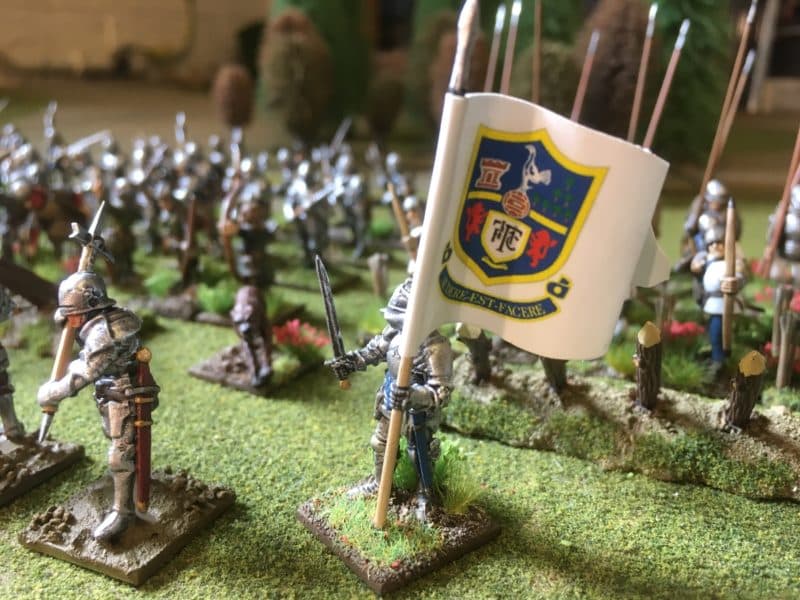
Harry Hotspur fly’s the flag!
One of the joys of my hobby is the historical research into the background of the characters and battles that took place. However, much as I take this seriously and spend a great deal of my leisure time reading, visiting battlefields and museums, when it comes to the painting and modelling, I am happy to take a less rigorous approach. My collection of figures are painted to the best of my ability to represent a generic force from the period that I am interested in rather than a specific unit or army in a specific battle. I’m just not into button counting and although I do like to get the detail as correct as my research allows, I am happy to go ‘wildling’!
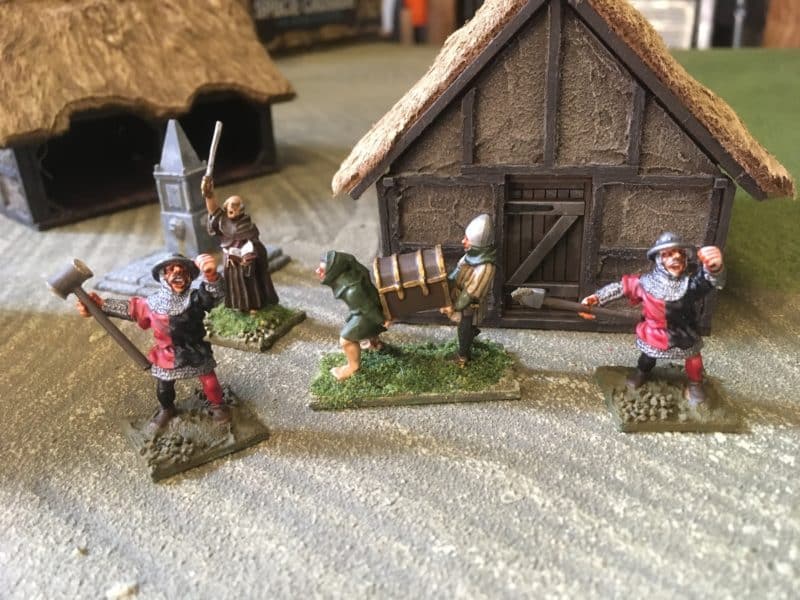
You’ve given us the wrong armour and livery!!!
The figures above are a case in point. I have recovered them from the bottom of my lead pile and repainted them to be part of a siege force that will include a trebuchet model that I recently acquired. I suspect that the armour is more suited to a period earlier than the WOTR. The livery colours are a nod in the direction of Warwick (EDIT! whoops! just rereading my books after I wrote this post and I’ve actually used Talbots livery…. Ah well, it will still do as I like the red and black!), for no other reason than there is a superb working replica of a trebuchet that I have seen in action at Warwick castle!
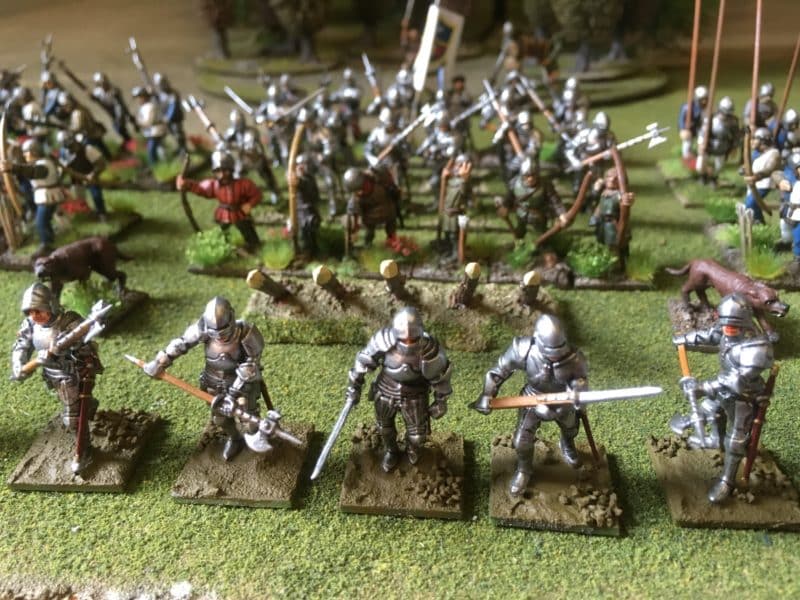
Another batch of Men at arms ready for basing.
Meanwhile, I continue to work my way through the Perry’s Foot Knight set, with another 6 Foot knights completed and waiting for the basing to be completed and six more foot knights well underway.
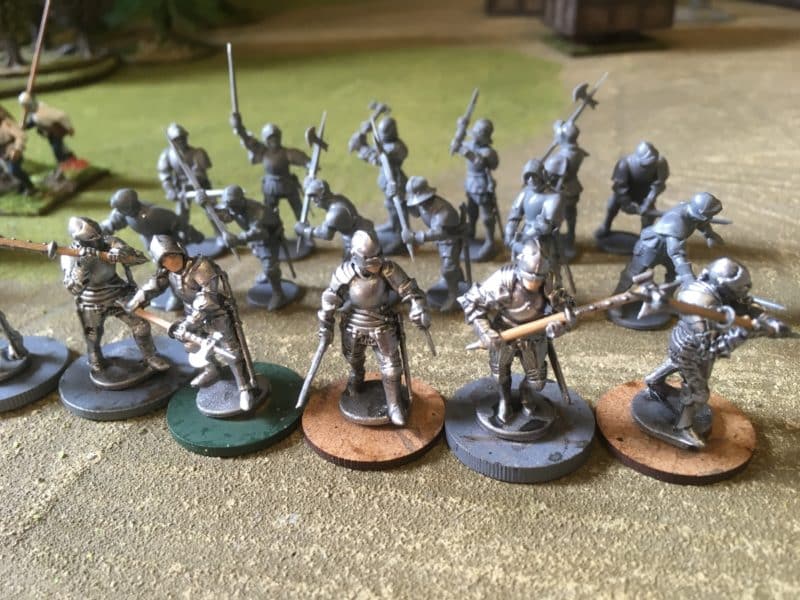
The final 6 foot knights in armour – just the detail to complete.
In the back ground of the above picture are the 12 foot knights that have tabards over their armour. Completing these will mean that I will have finished the boxed set and added 36 foot knights to my retinue. It was painting the tabards that had made me pause and do some research on WOTR livery. I have decided to paint these in a mix of colours, White and blue, Red and Black and Red ( Murray) and Blue. This should give some variety to the look of my force, now 90 strong!
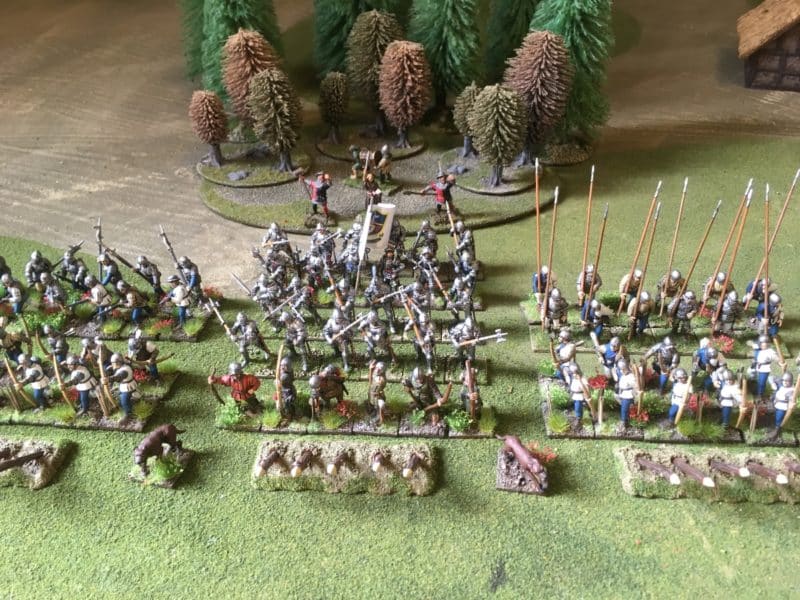
The army groweth!
If all goes well over Easter, my main force should be complete and ready to take to the table to fight against Sir Andy of Bingham, Sir Peter of Woodborough and the Lady Jasmine of Papplewick! And so to my own army, led by Harry Hotspur. If you haven’t already guessed, yes, that is the Tottenham Hotspur flag that my standard bearer is flying. At some point, as the army grows, I will add some more authentic standards to the force but for now, it’s a good day to be a Tottenham fan!
THE COMMERCIAL BIT
As I have mentioned above, if like me, you are starting out on a WOTR project, you could do no better than to visit the Vexillia site here:
VEXILLIA
You will find some very usefull free down loads as well as some excellent reference material.
Of course, if you need models, paints, bases scenery, go to our shop:
ARCANE SCENERY
We have the Perry’s plastic range in stock and at the time of writing we post free to most worldwide locations.
I have also created a new category for the blog, War Of The Roses, and gathered all of my other articles that are relevant under this category. This includes a few Lion Rampant battle reports and my visits to Stokes Field and Warwick castle, as well as how I have painted m some of my figures.
WAR OF THE ROSES BLOG ARTICLES
Happy Modelling!


